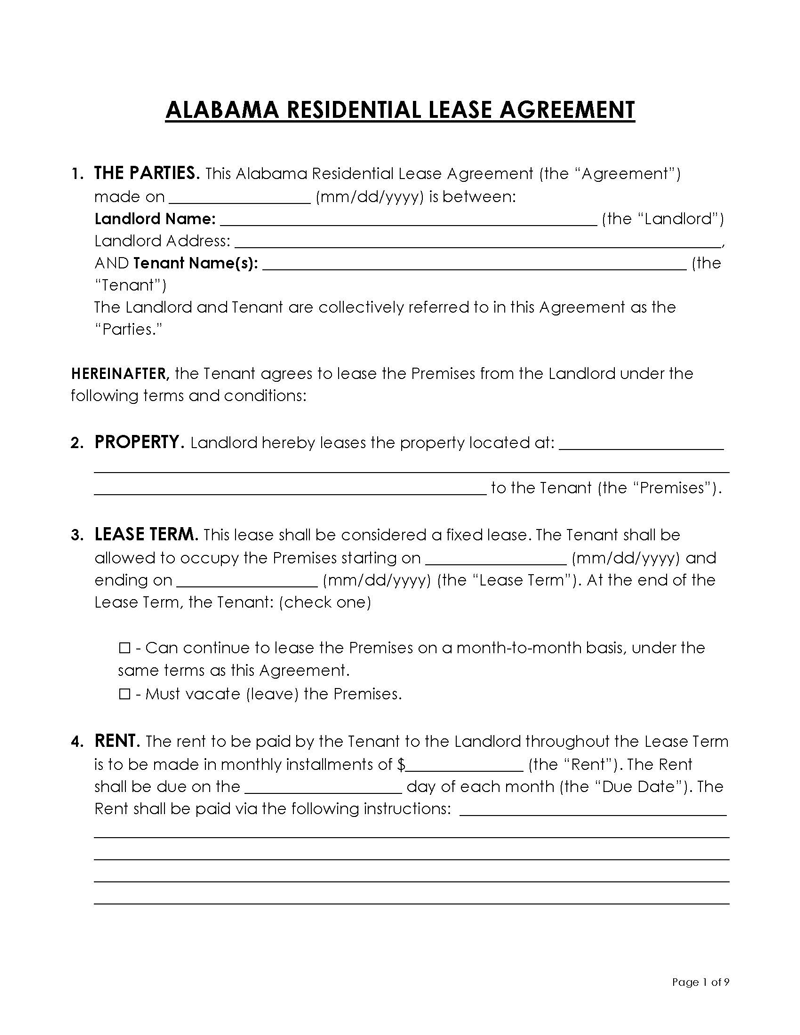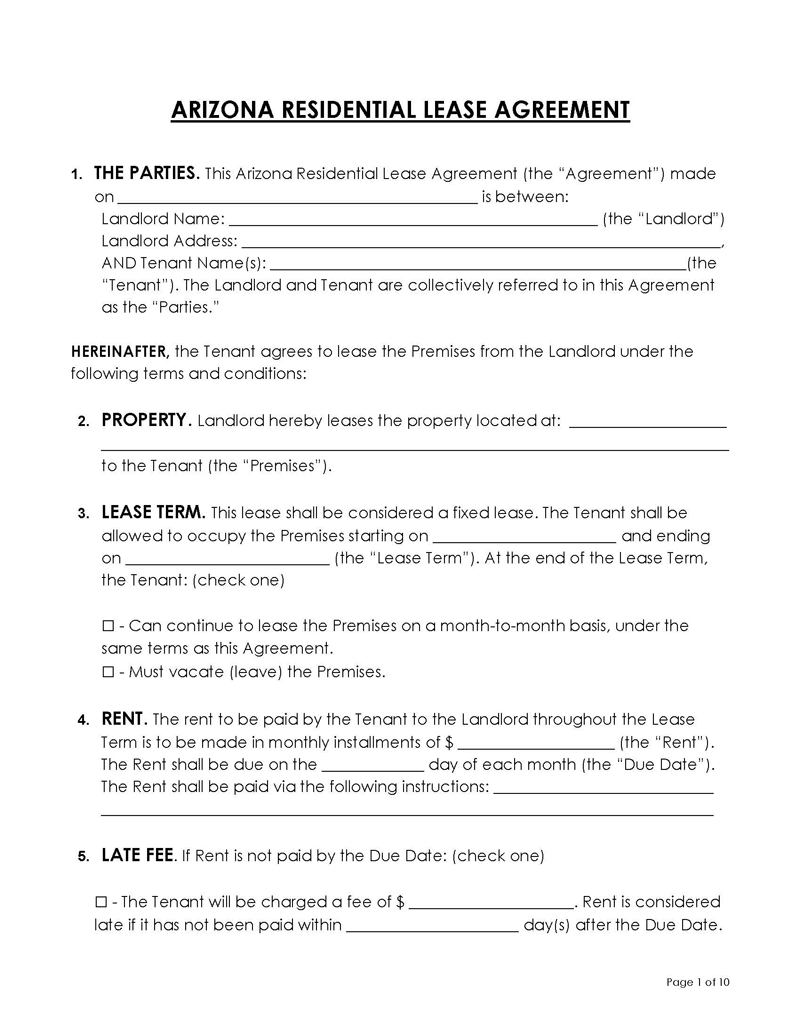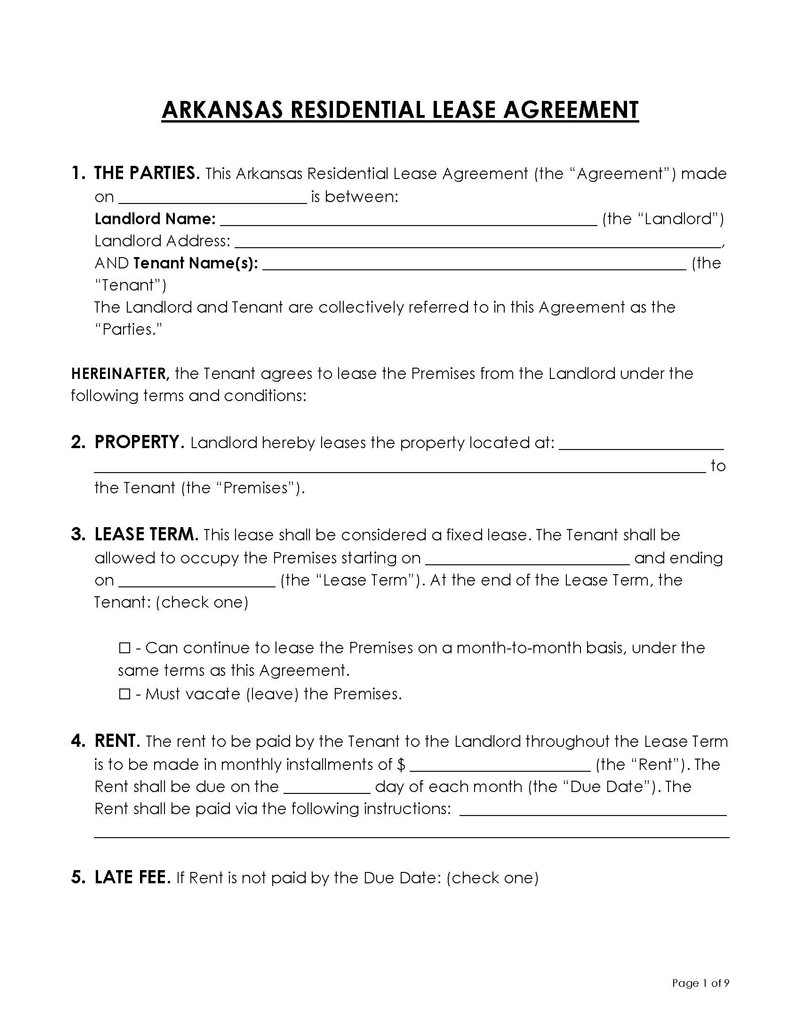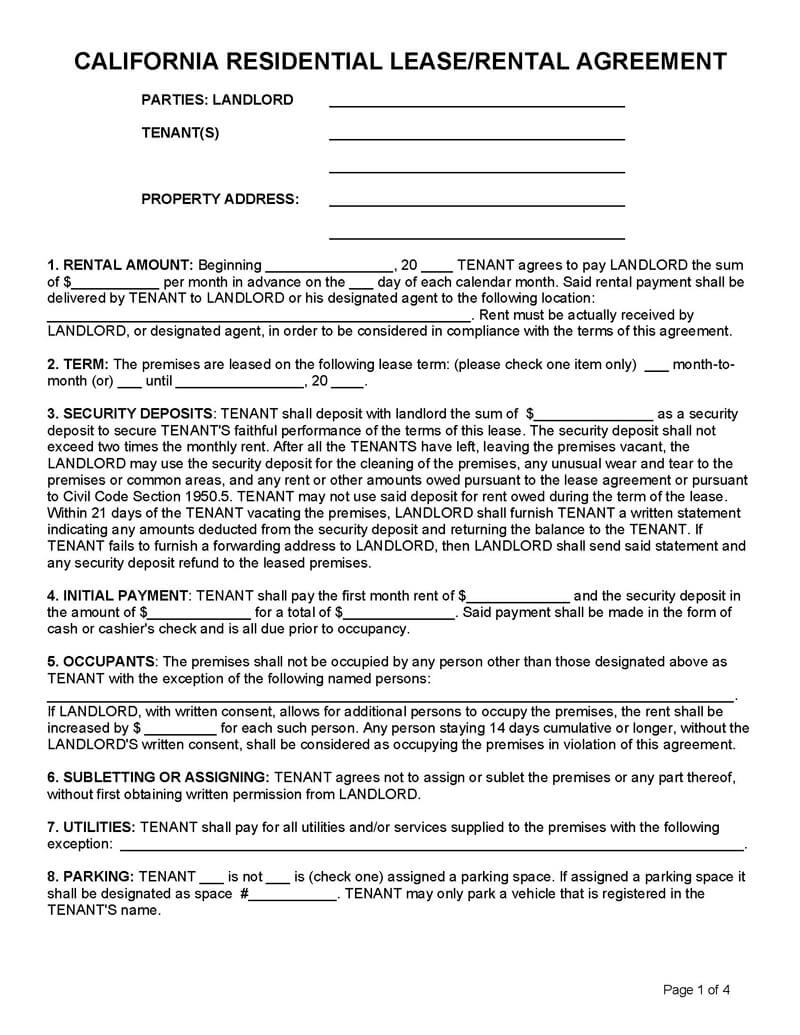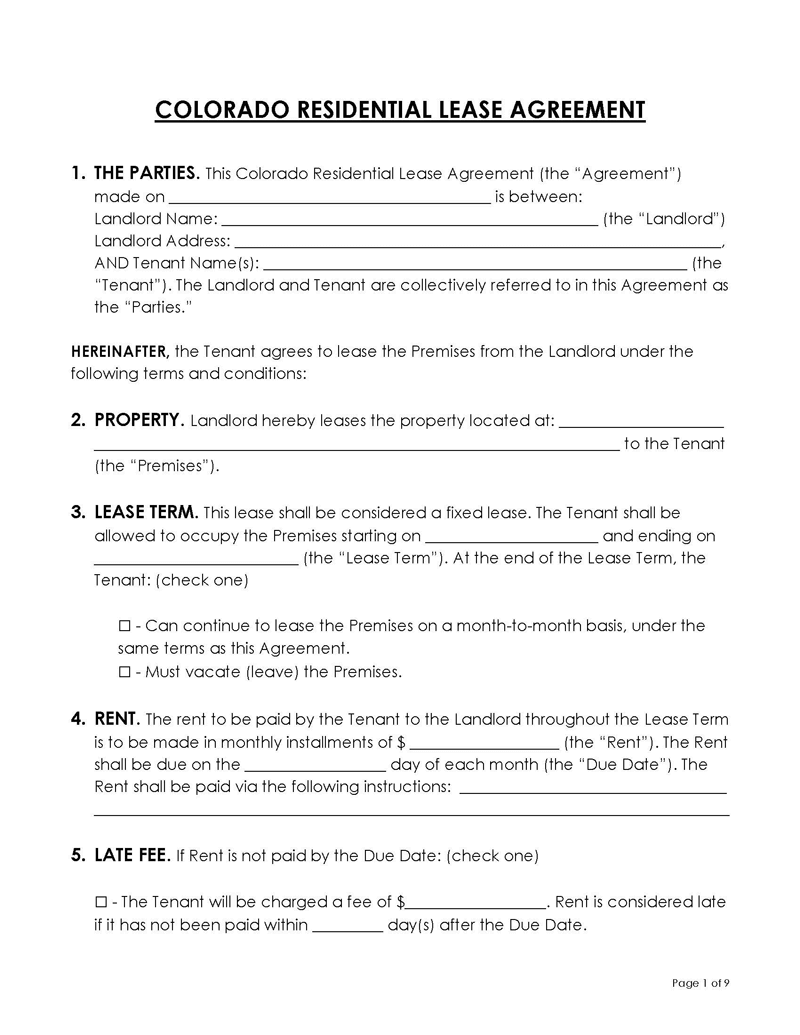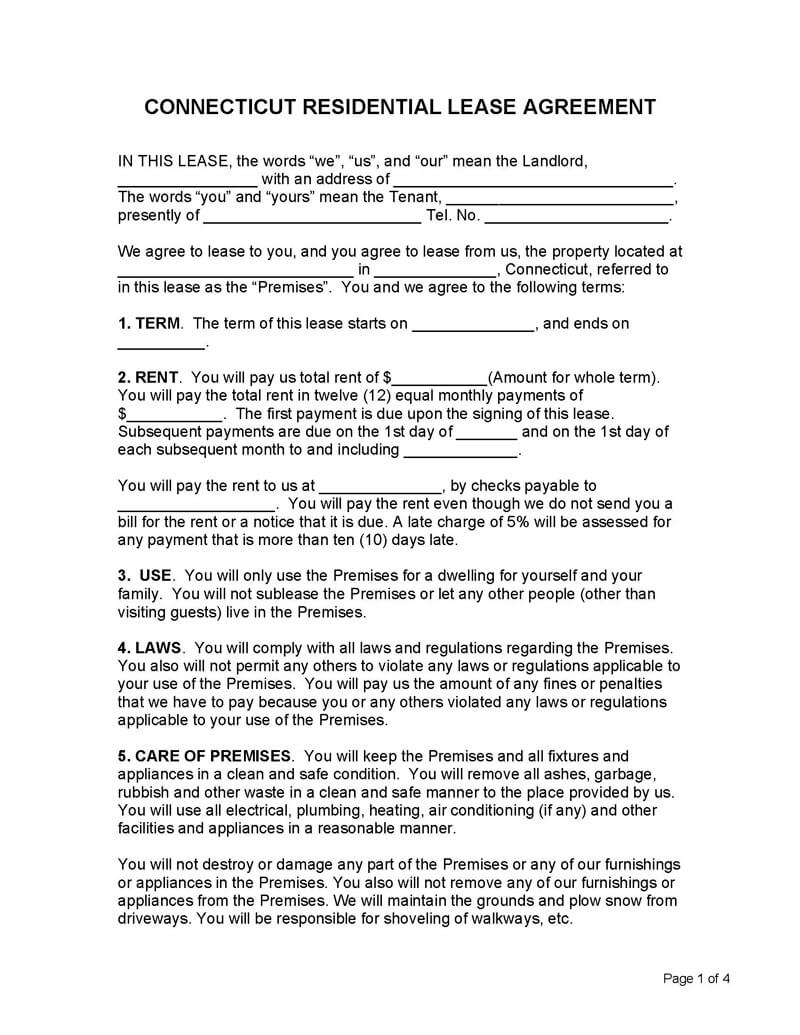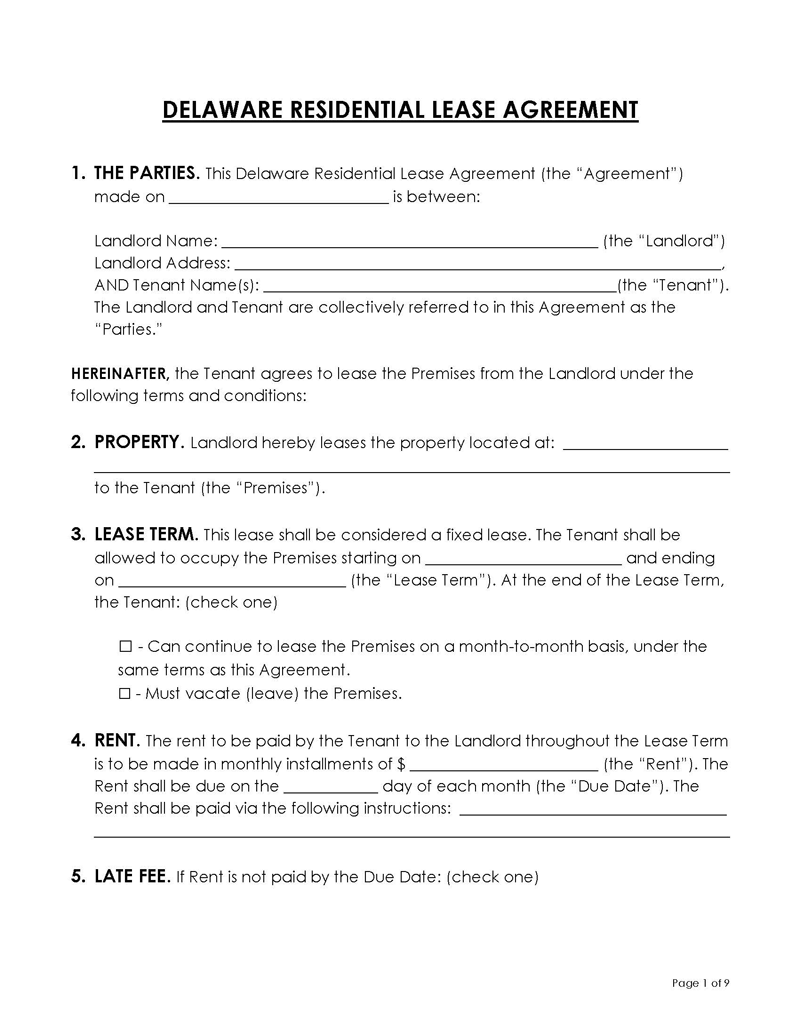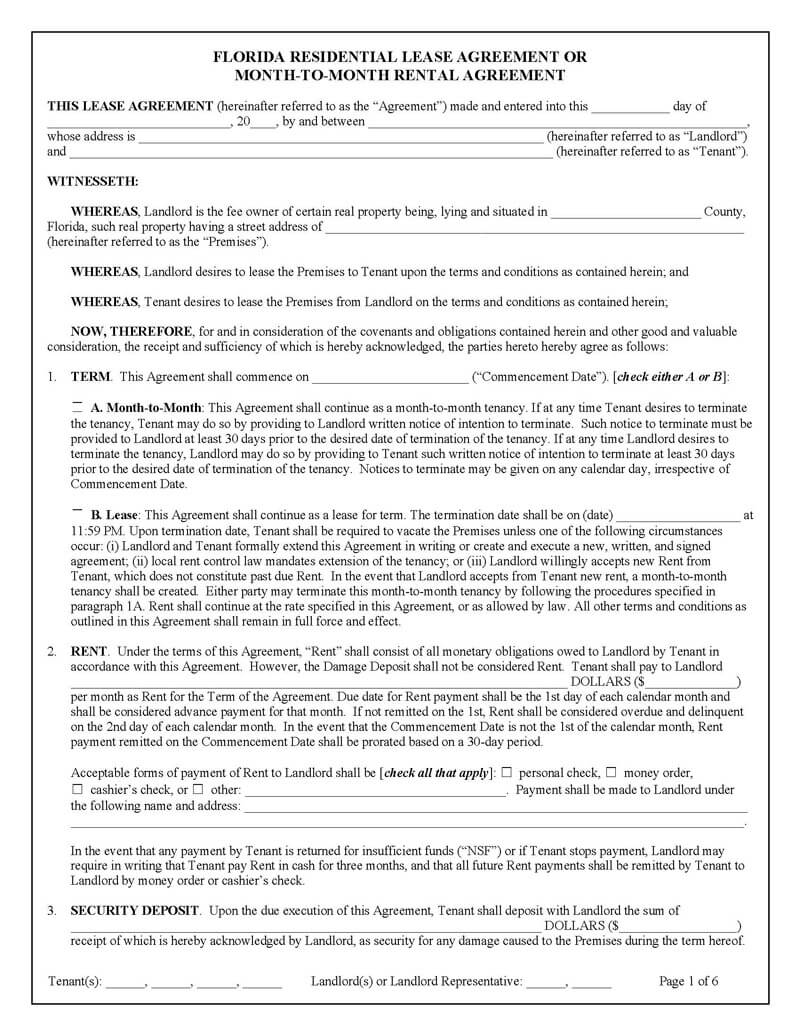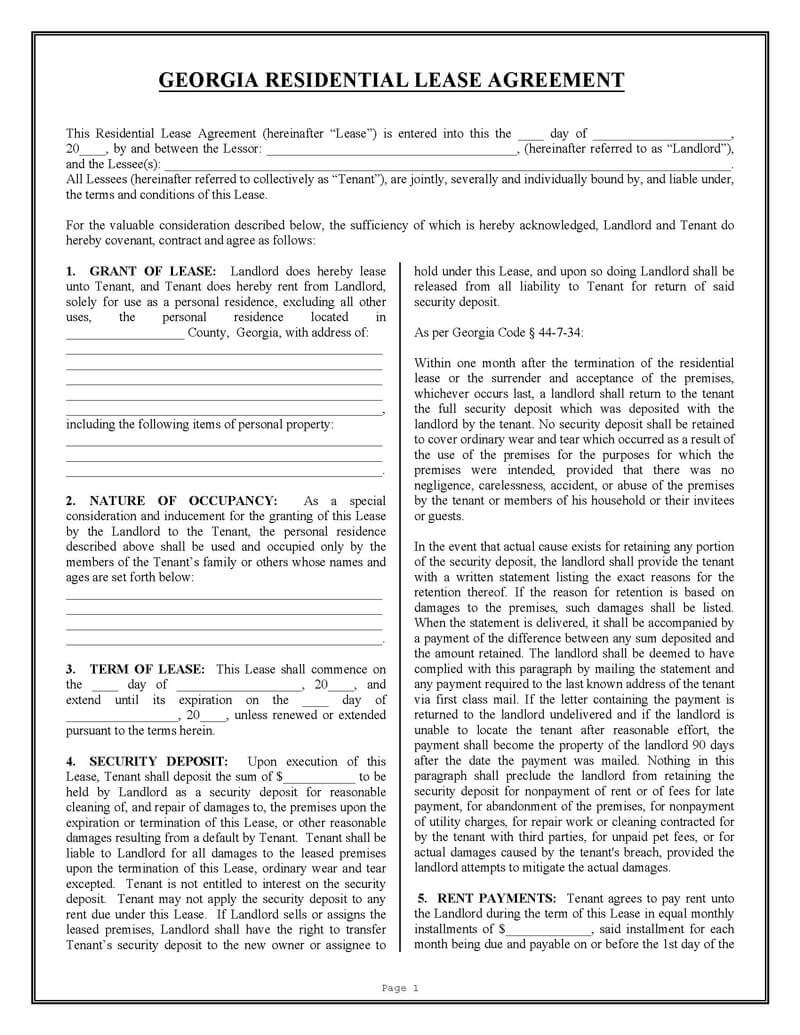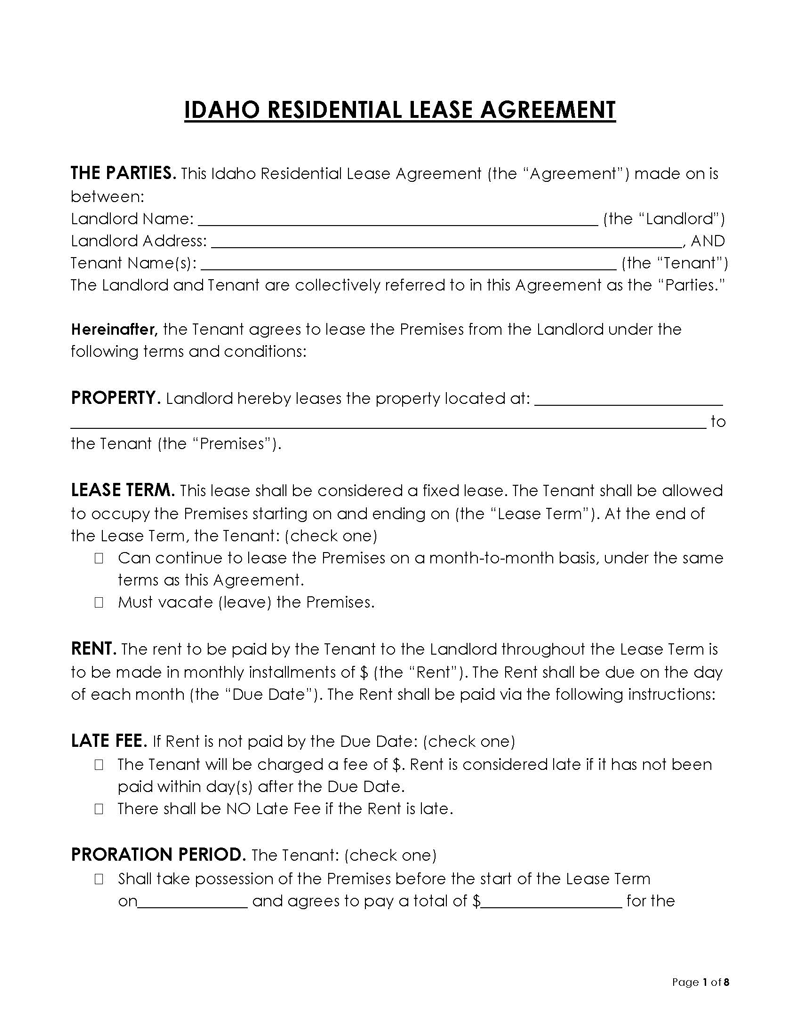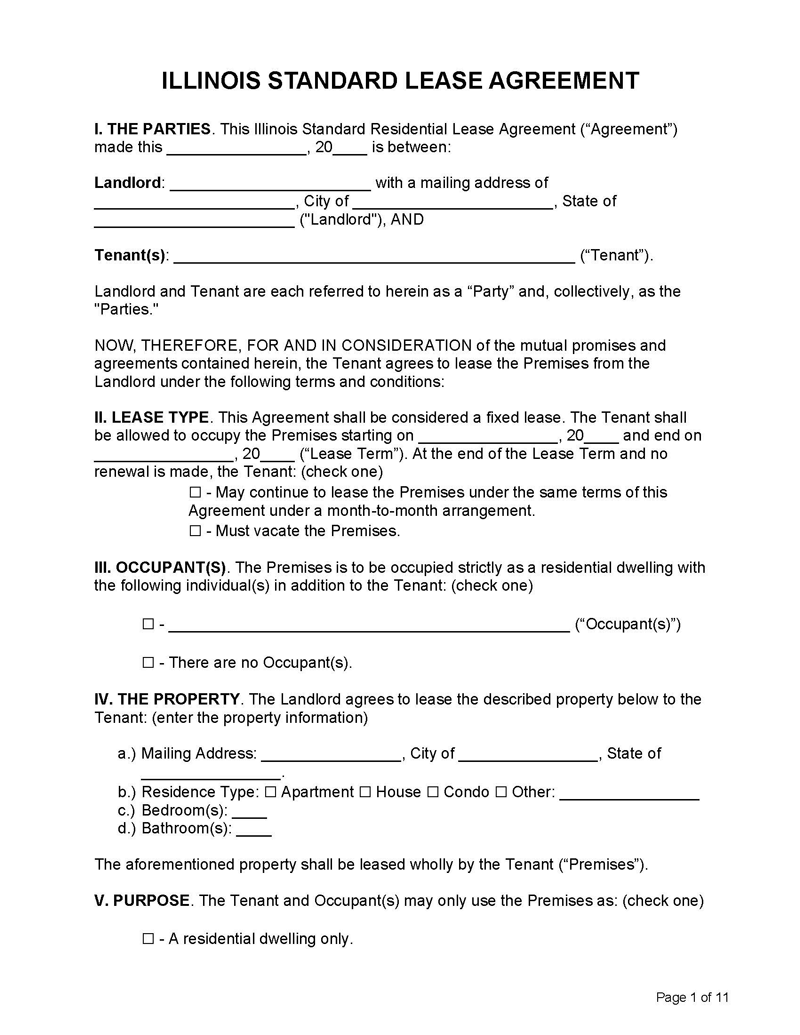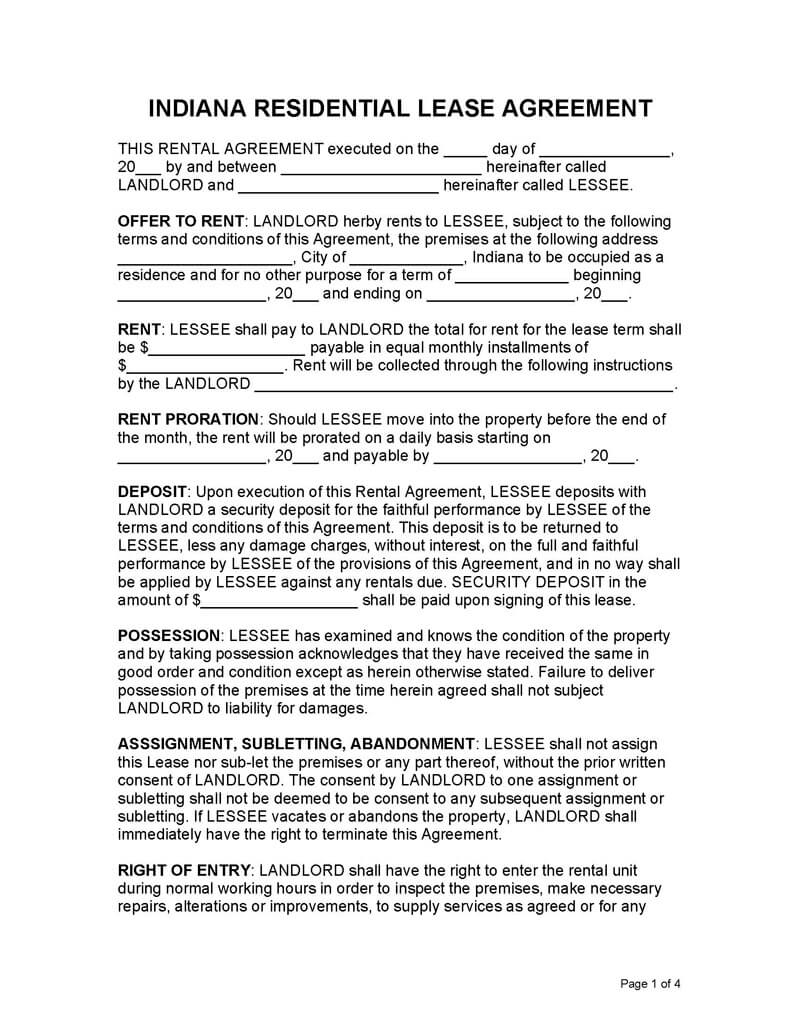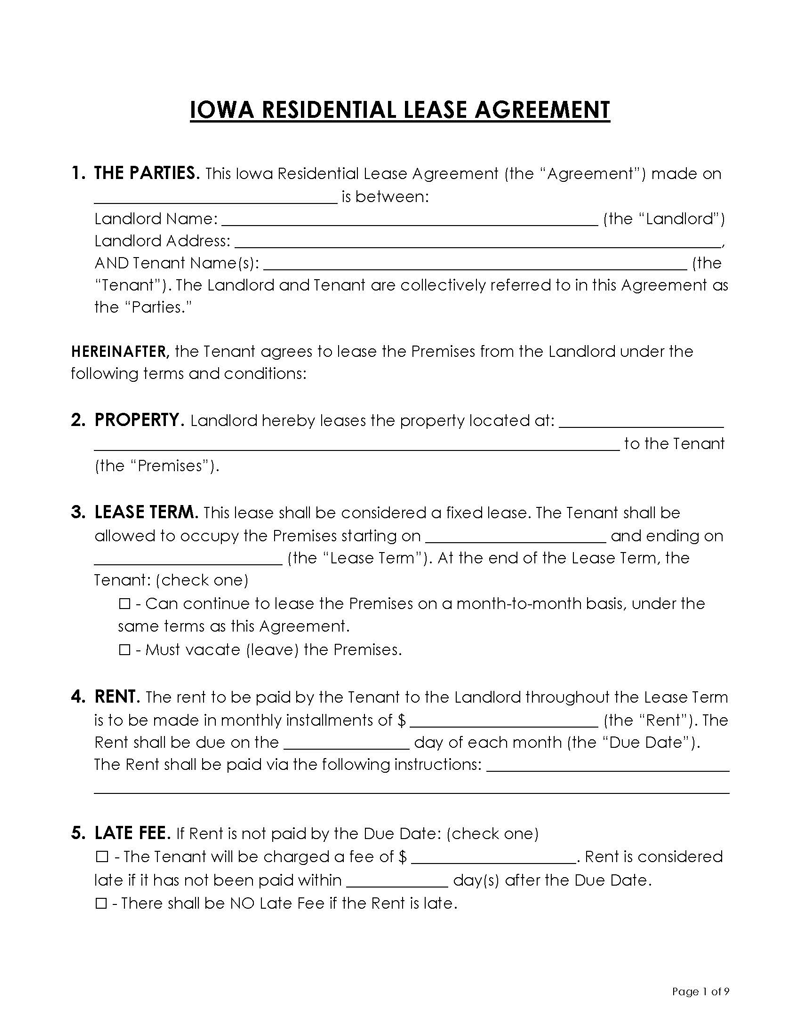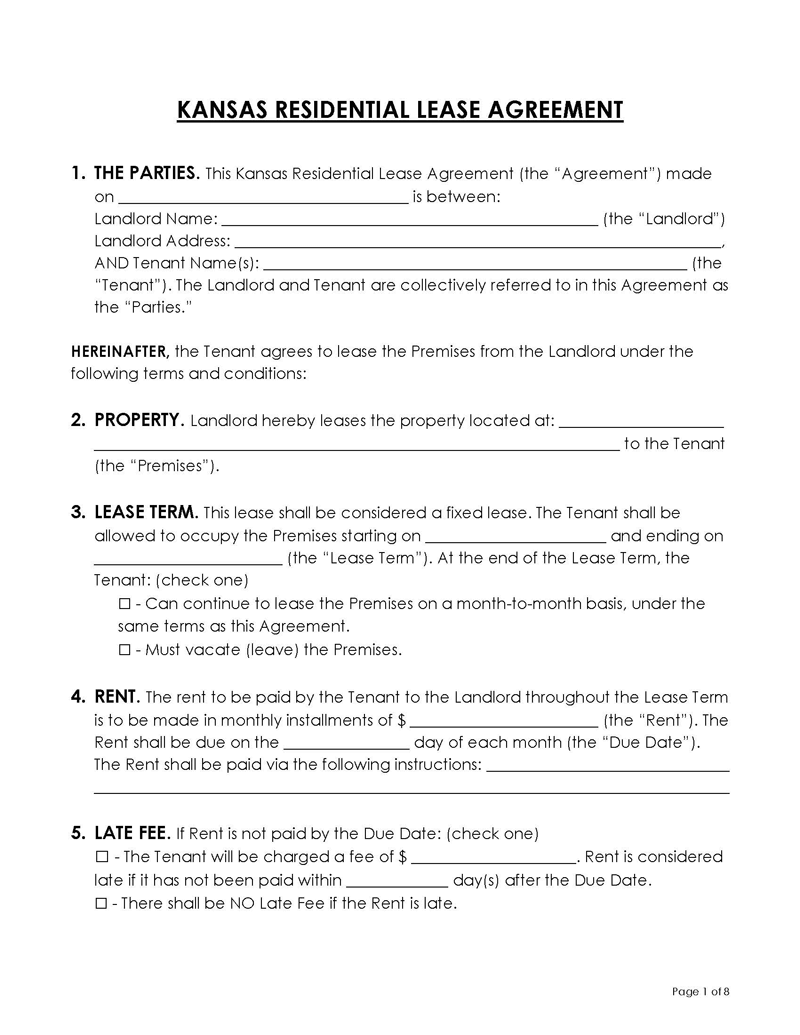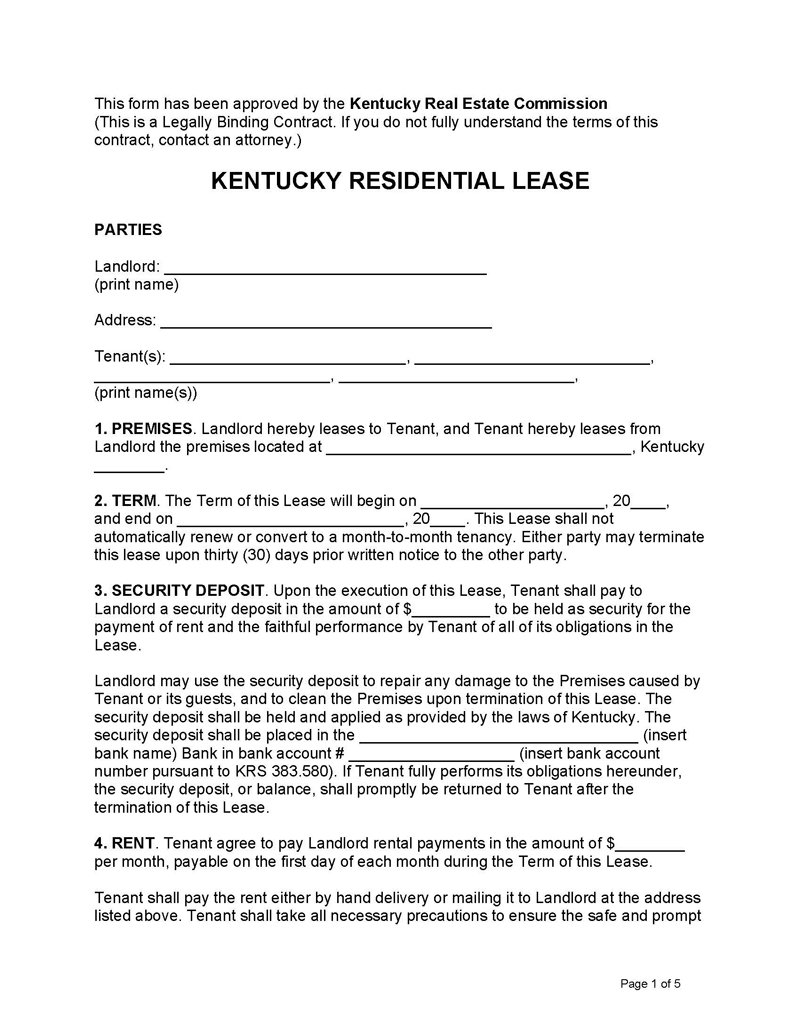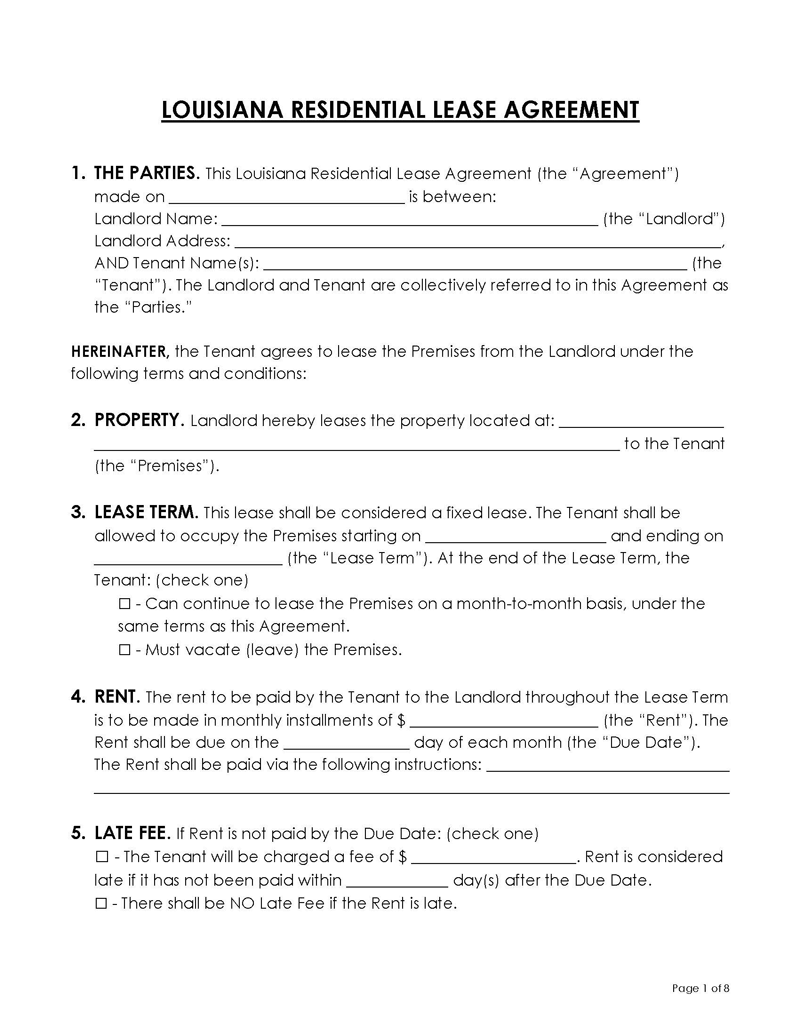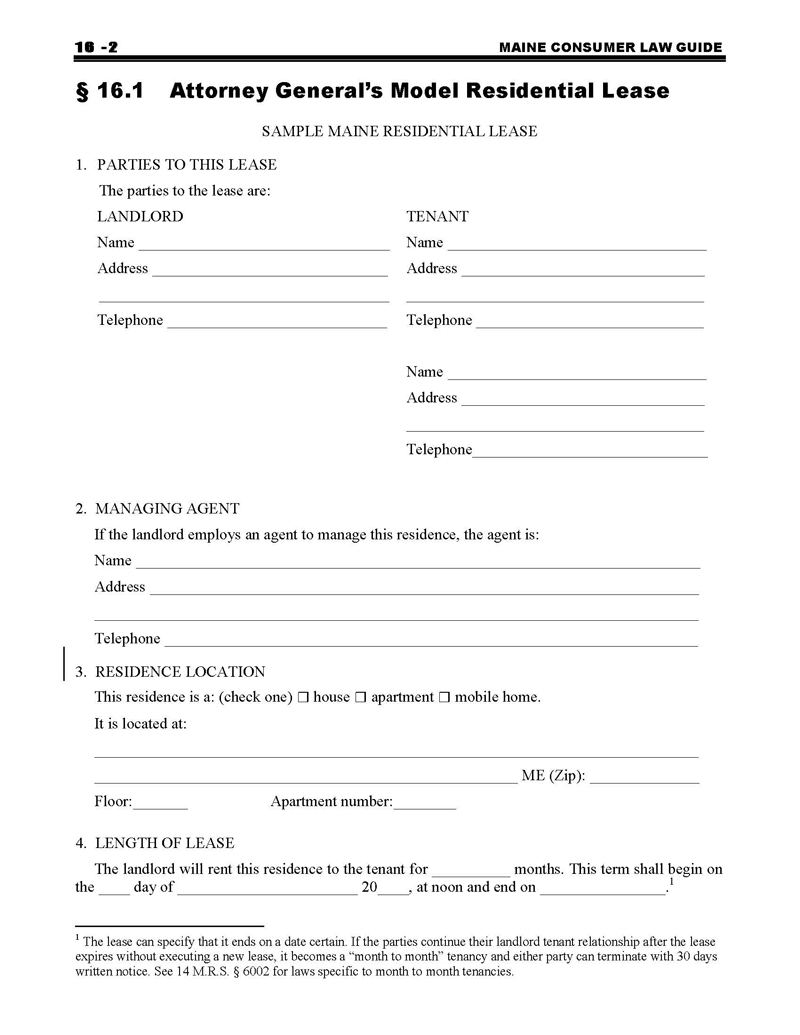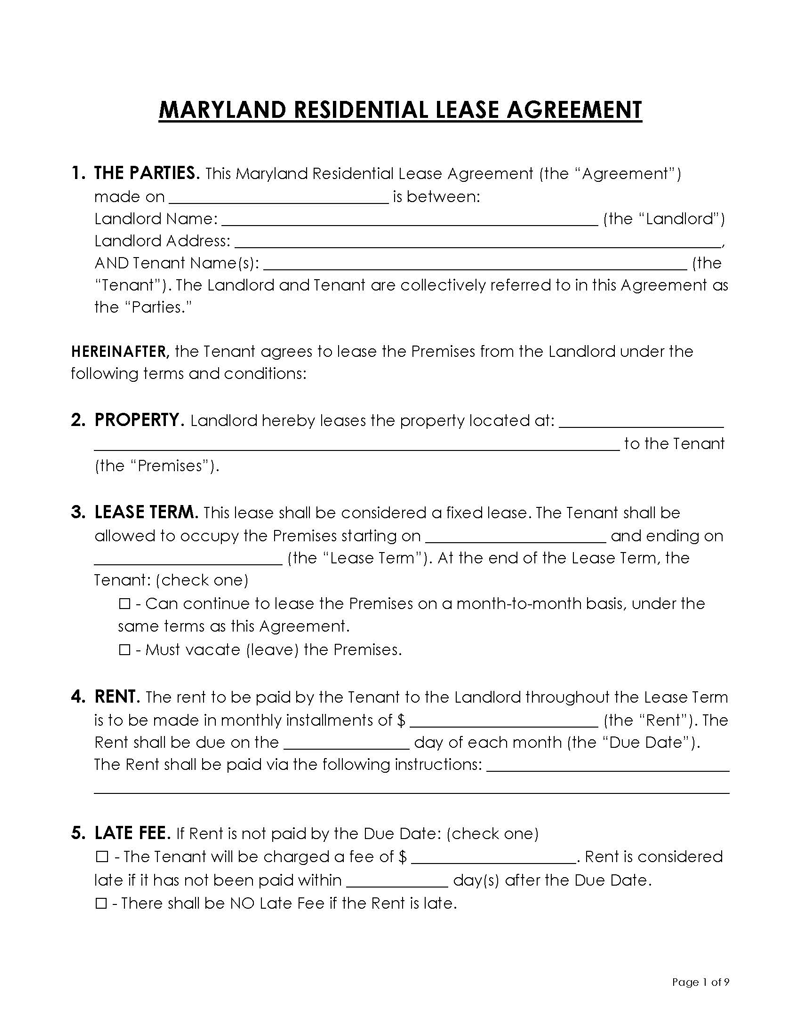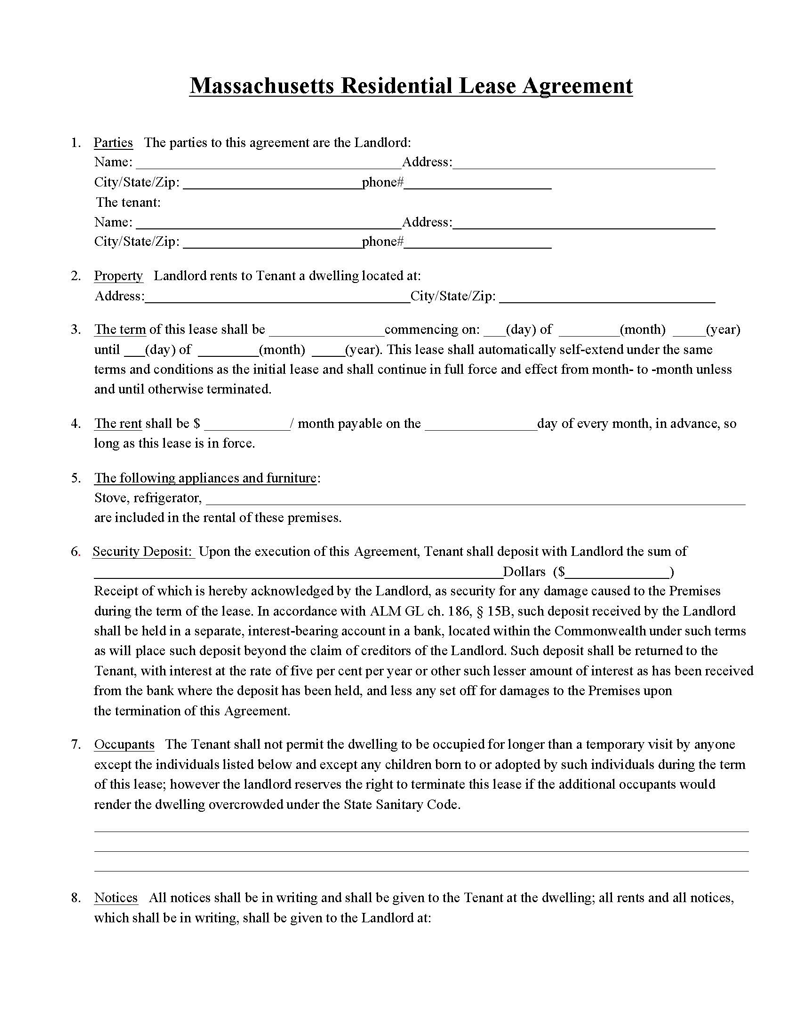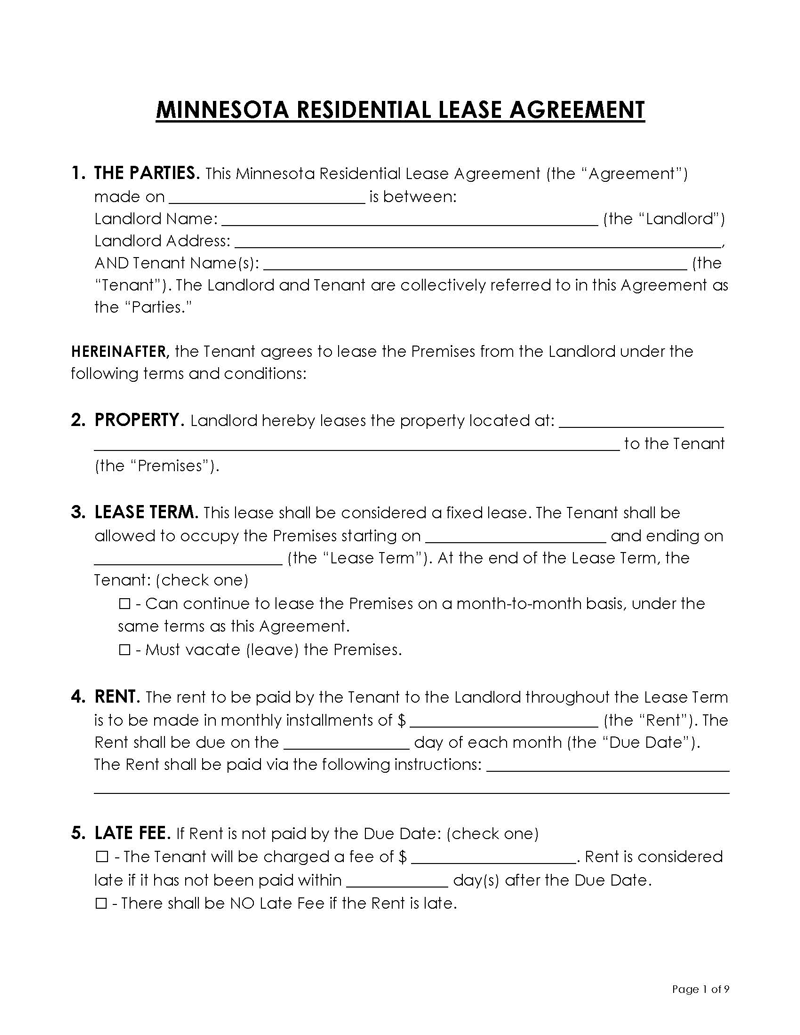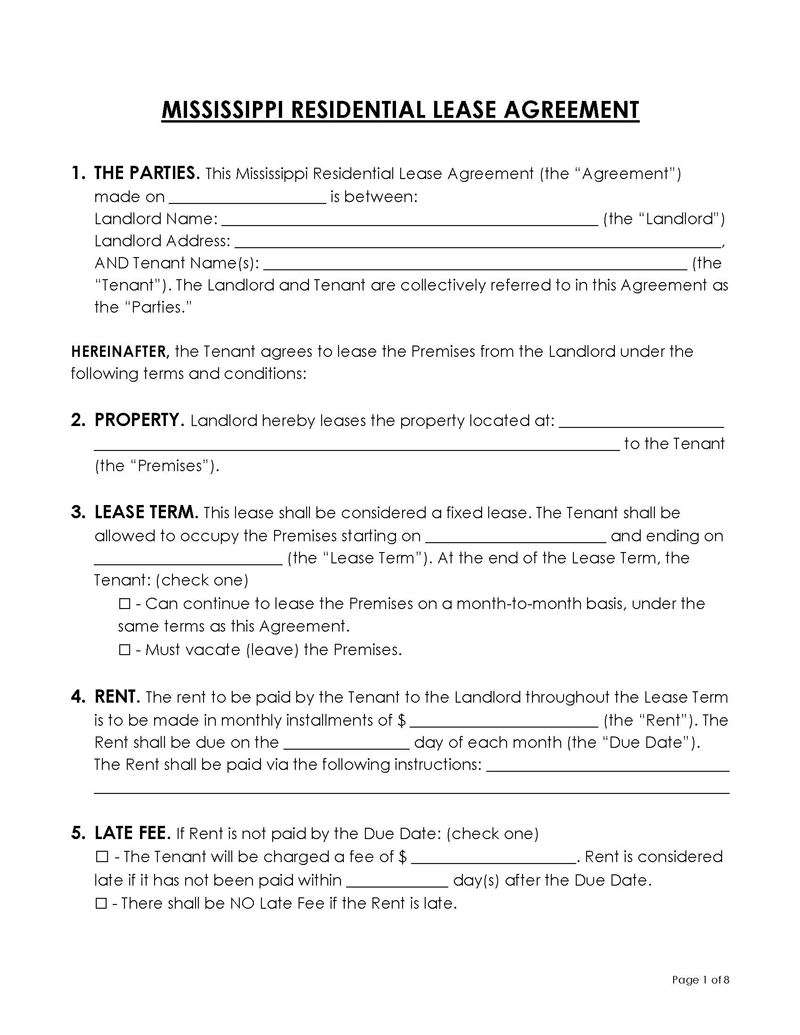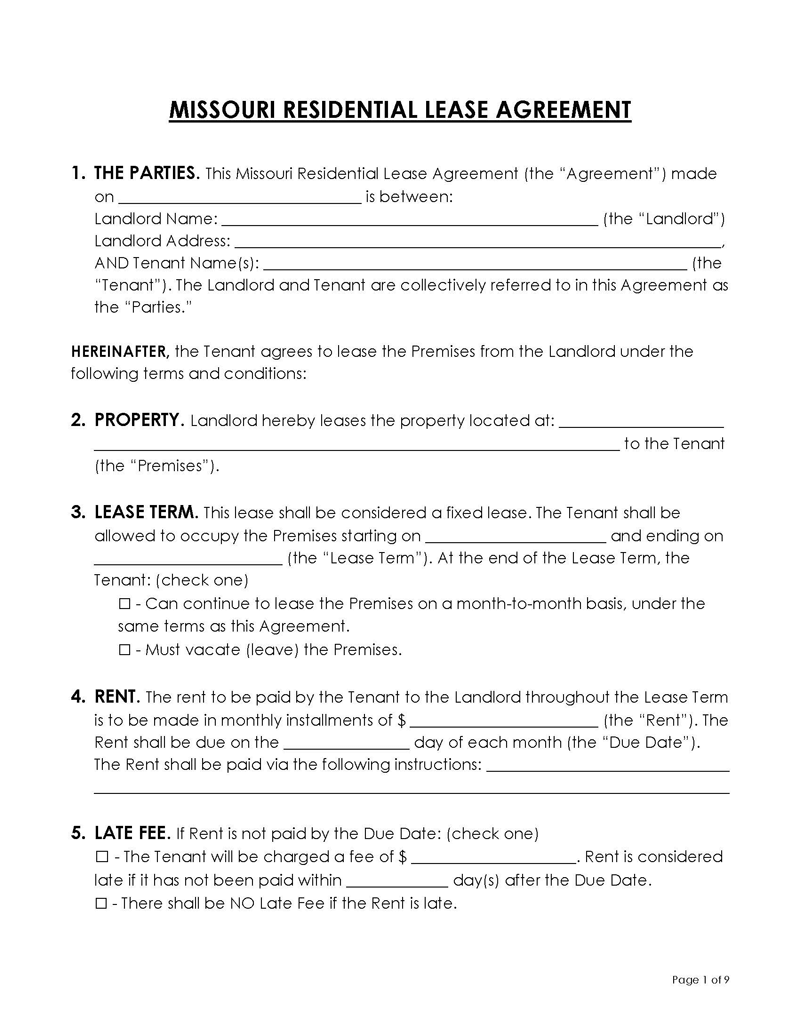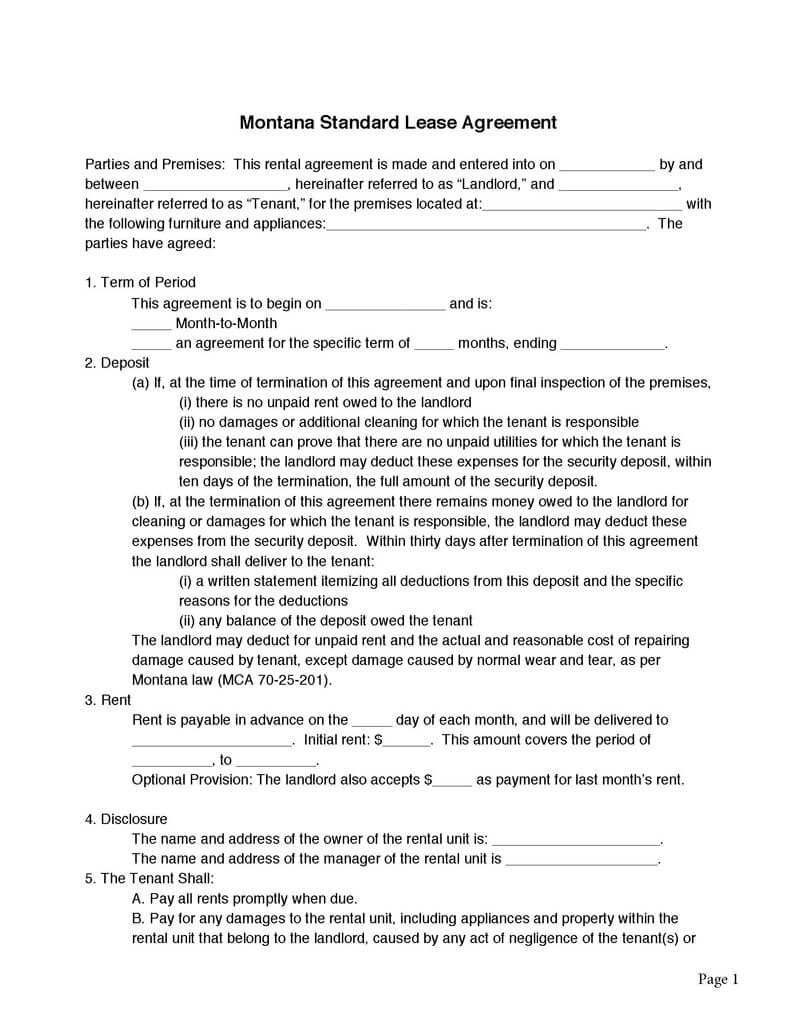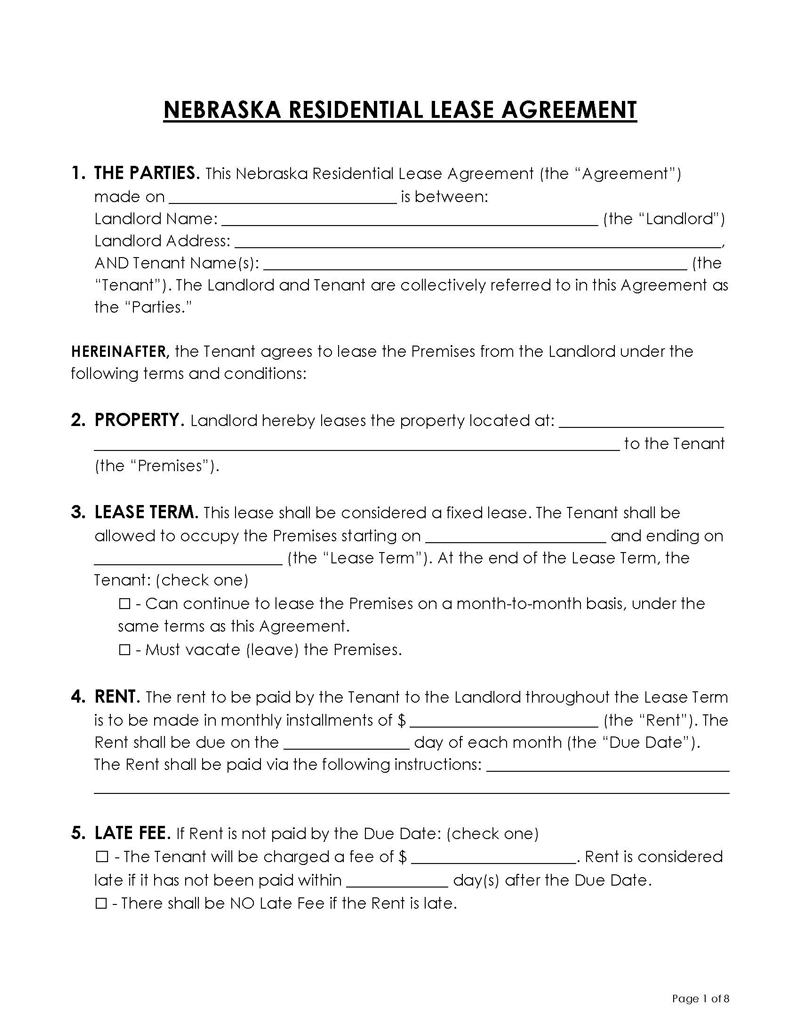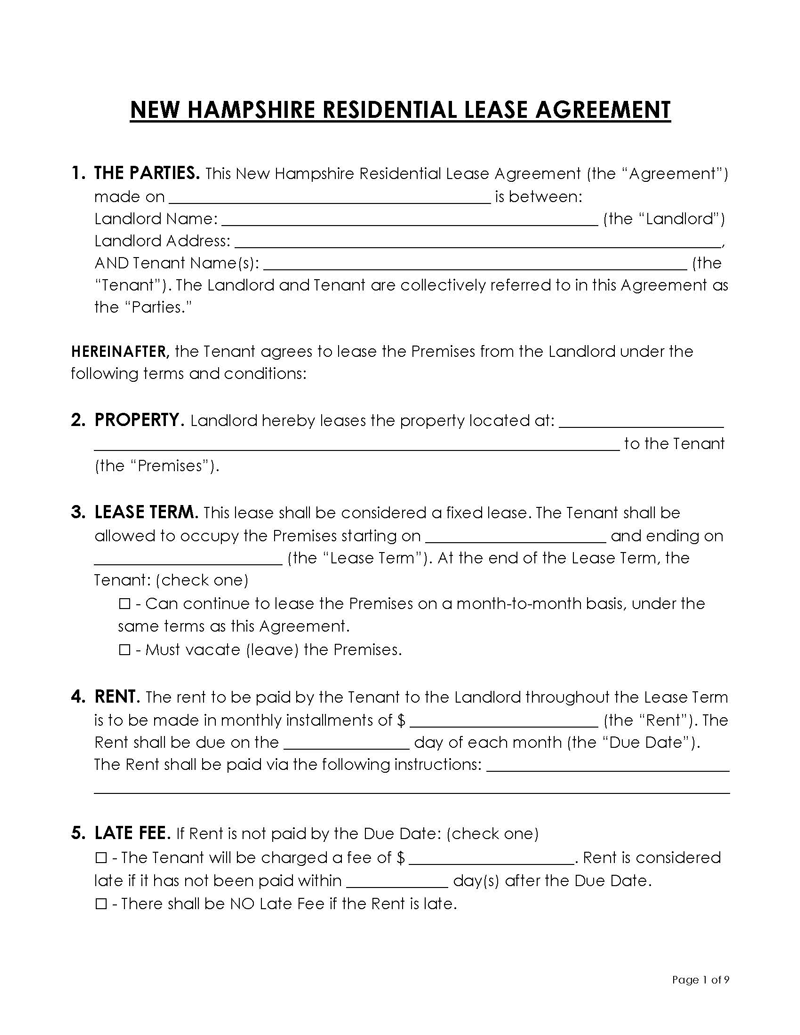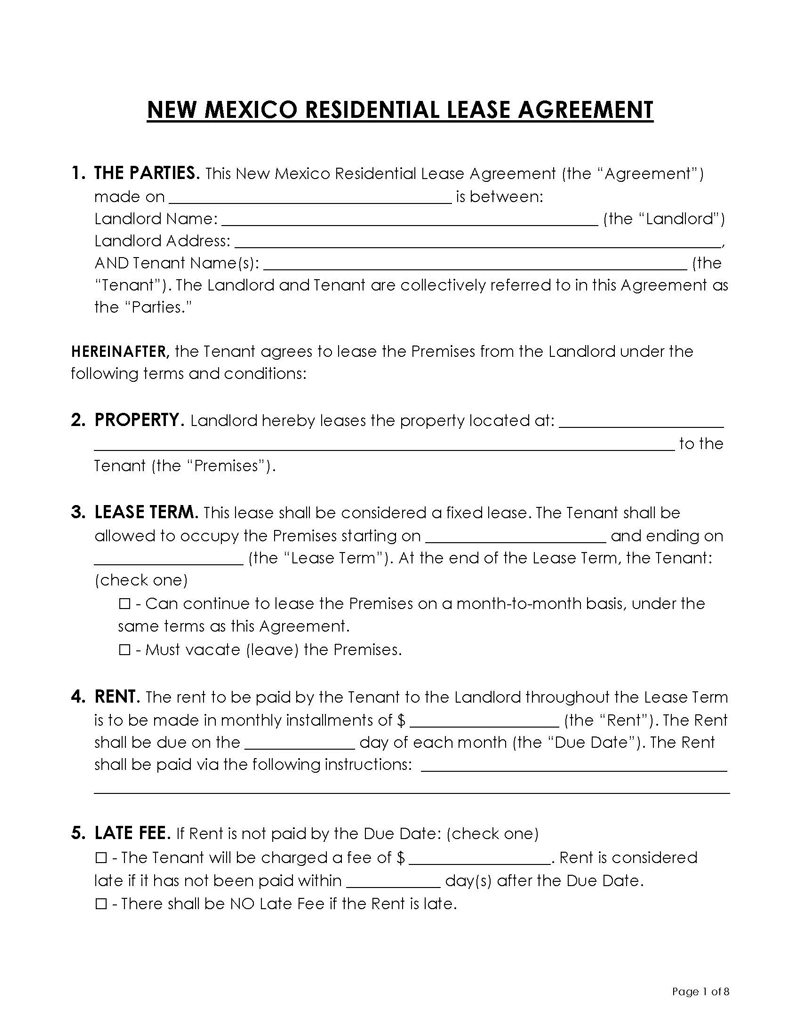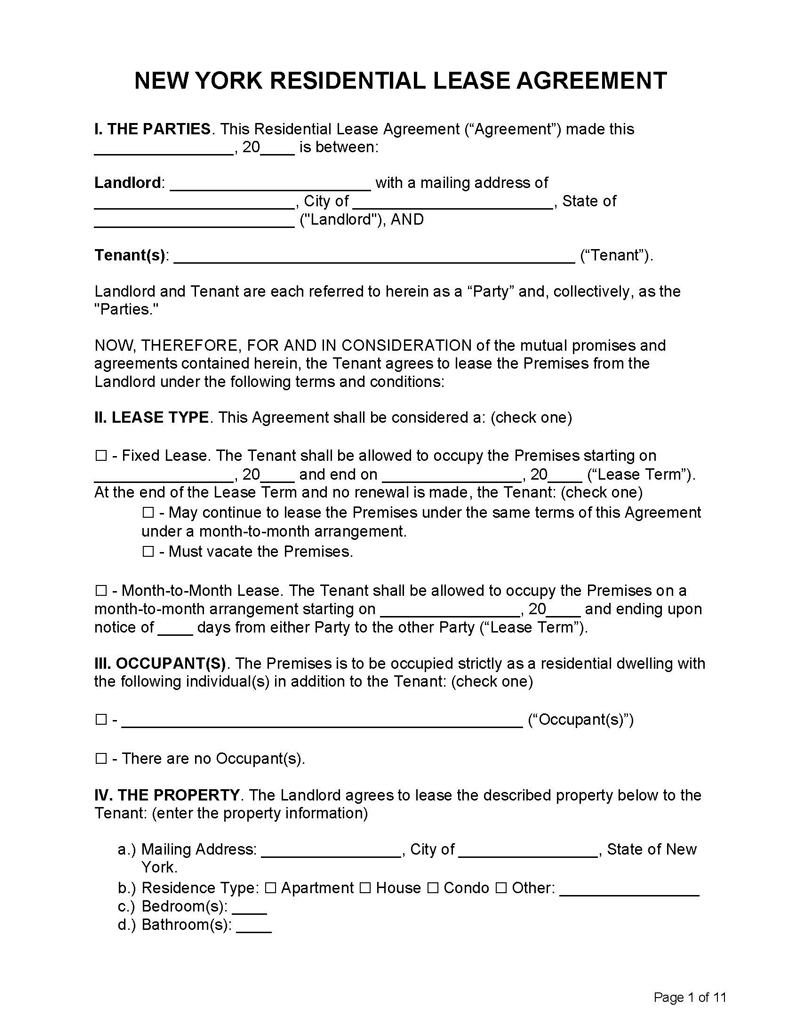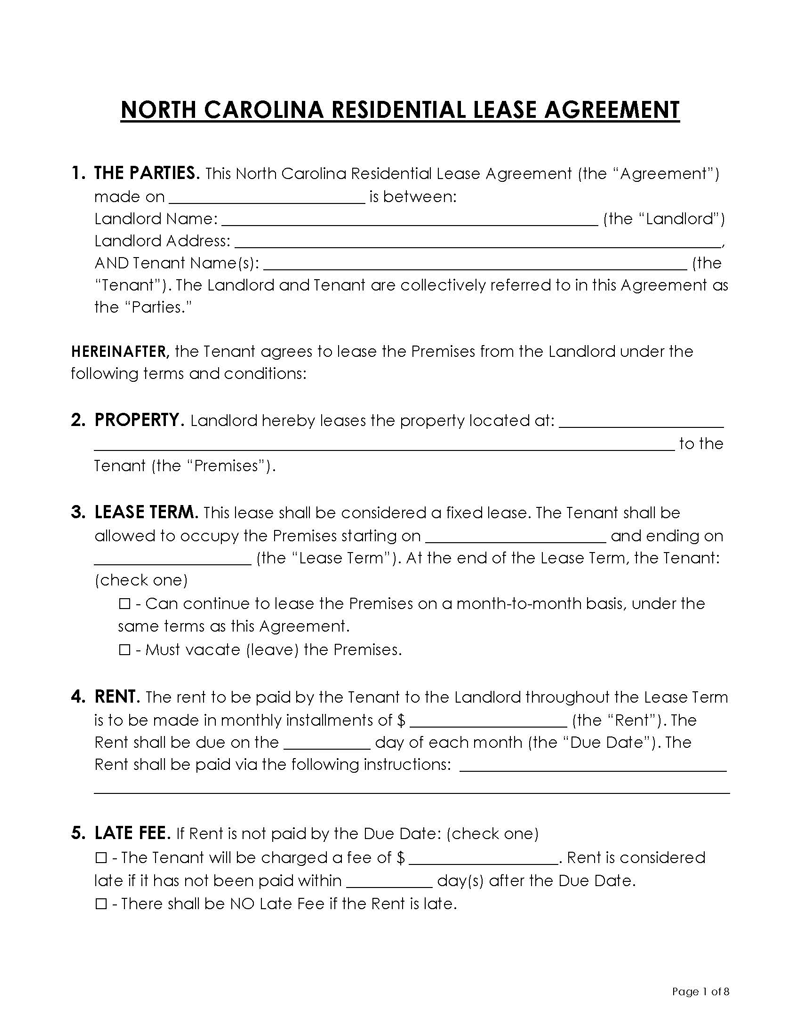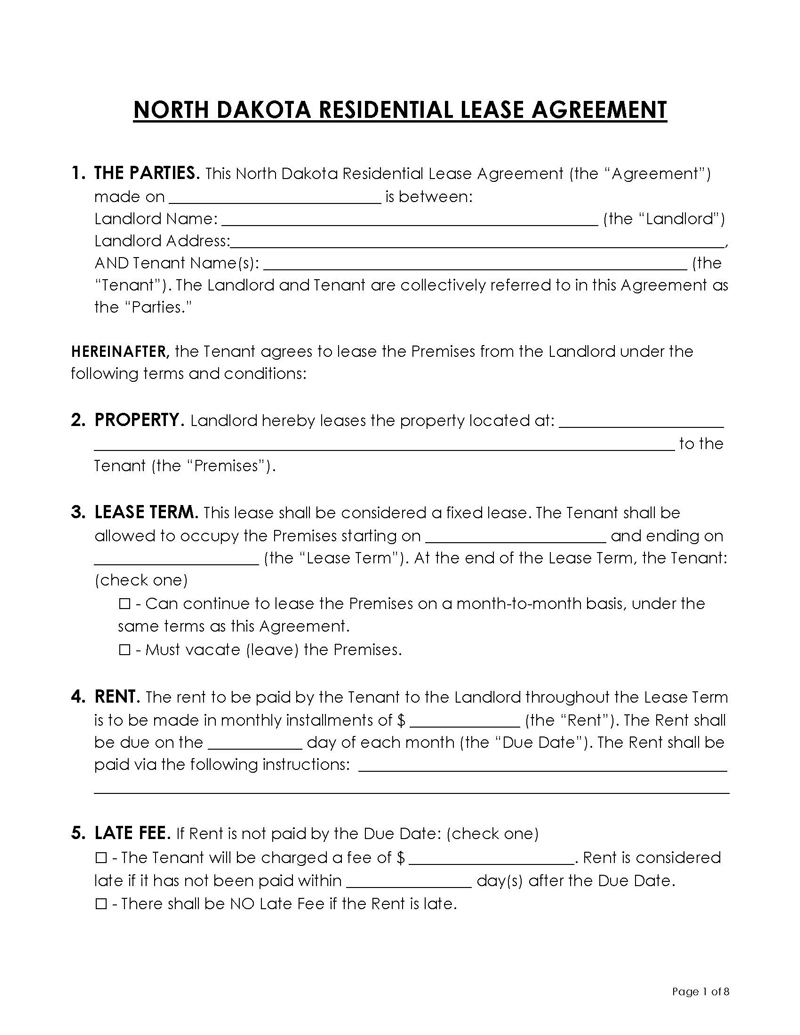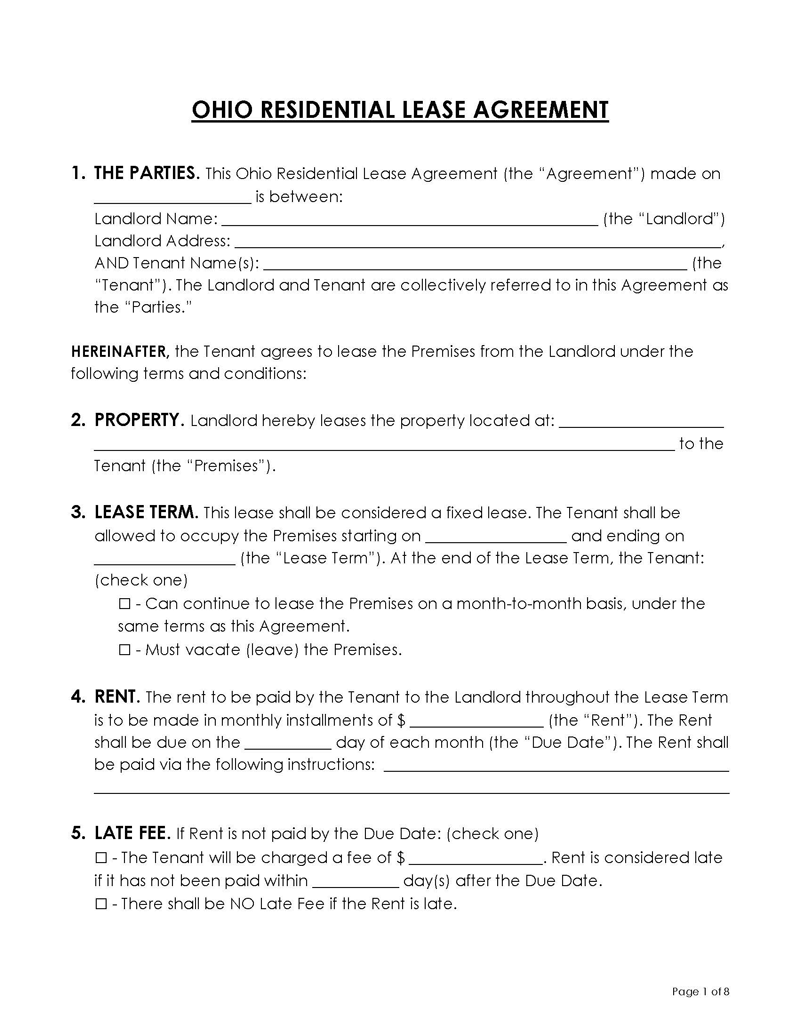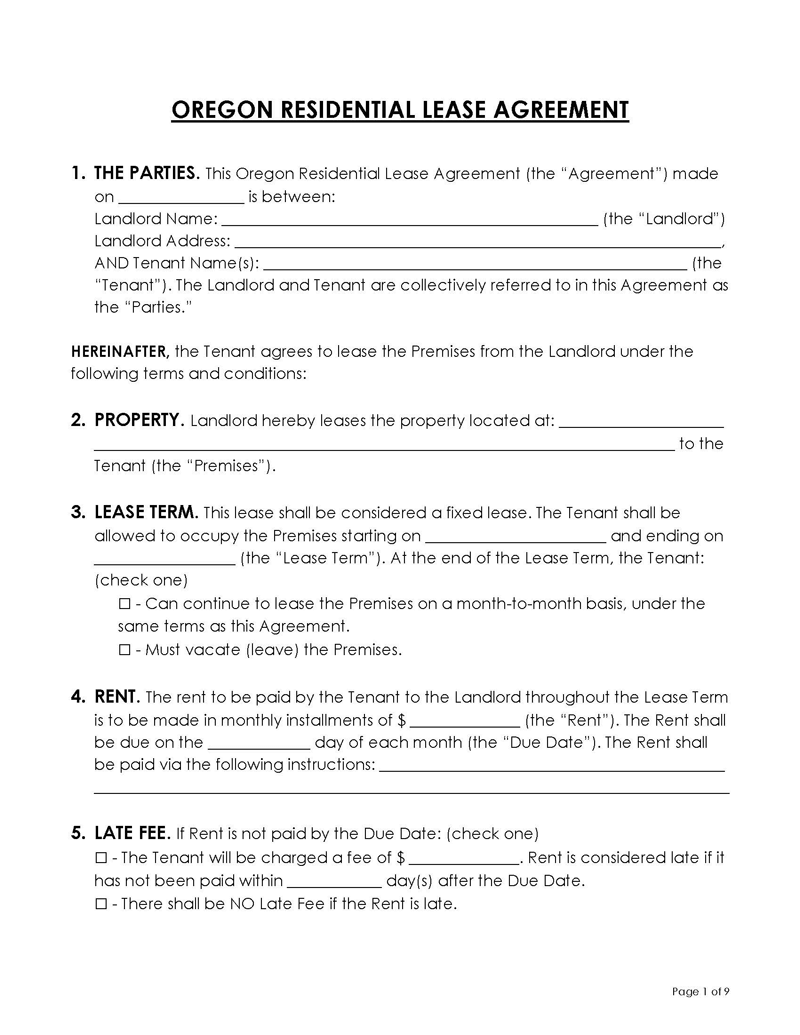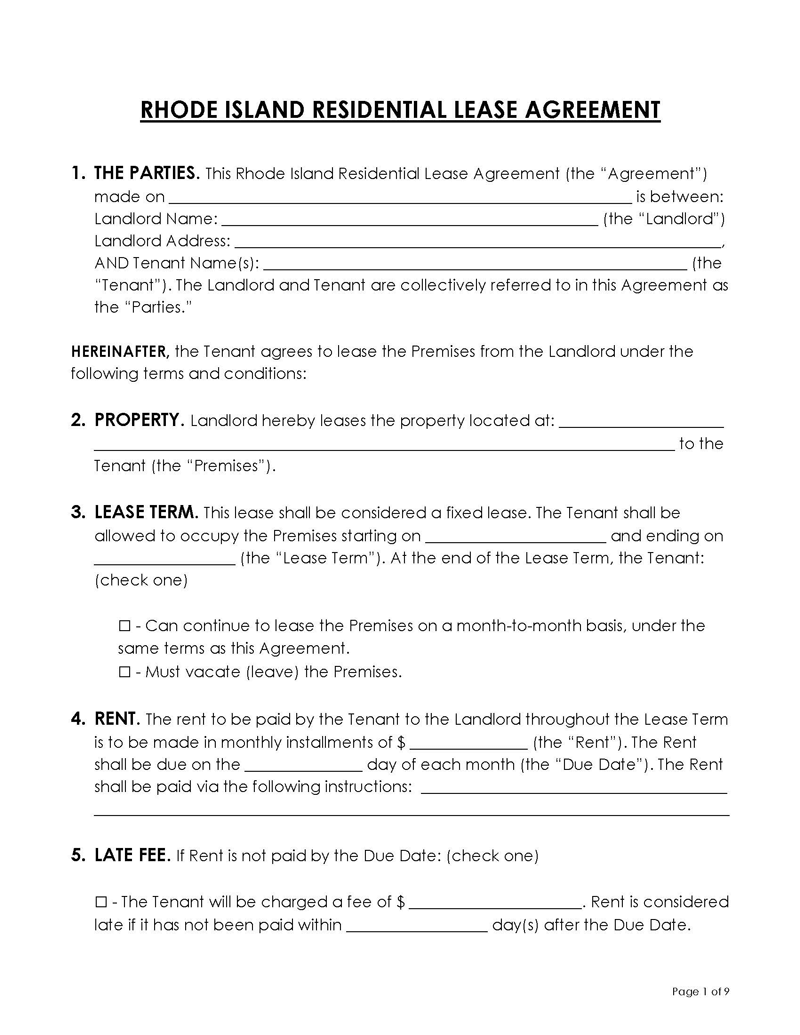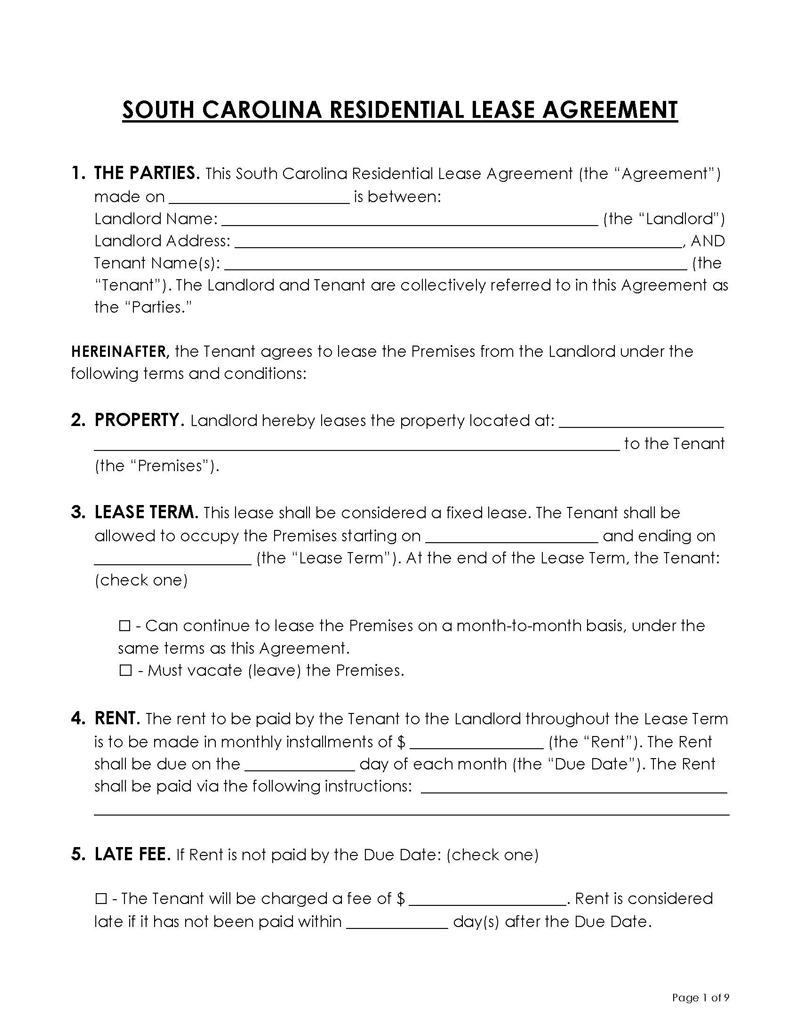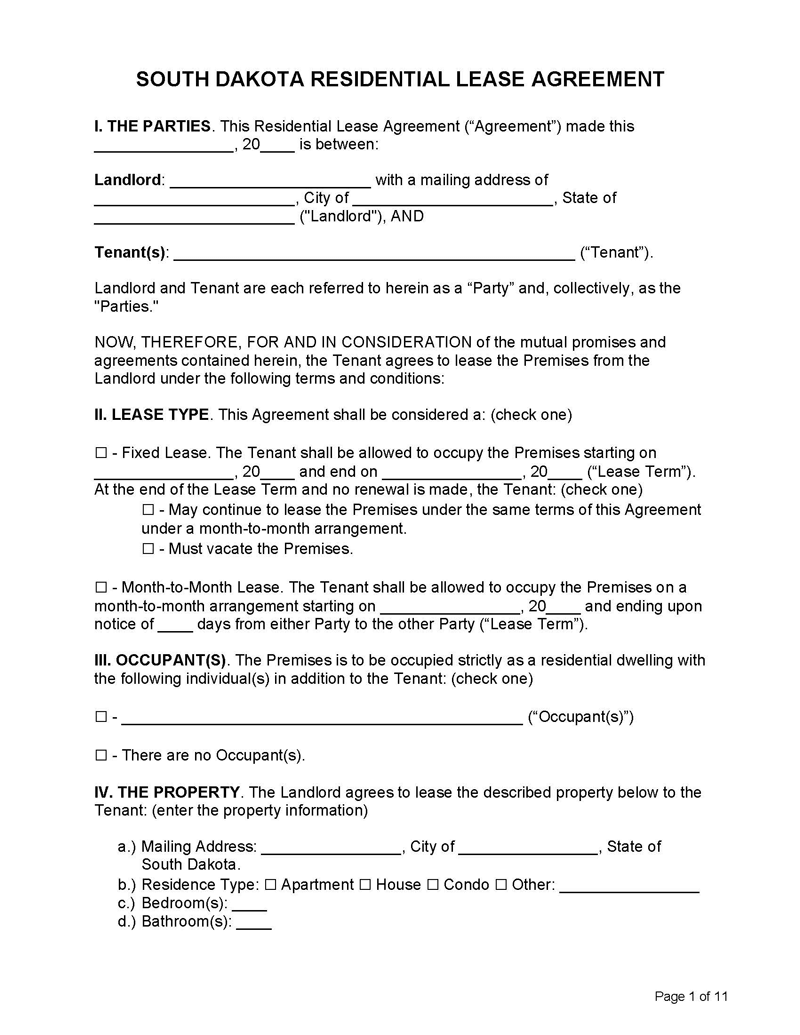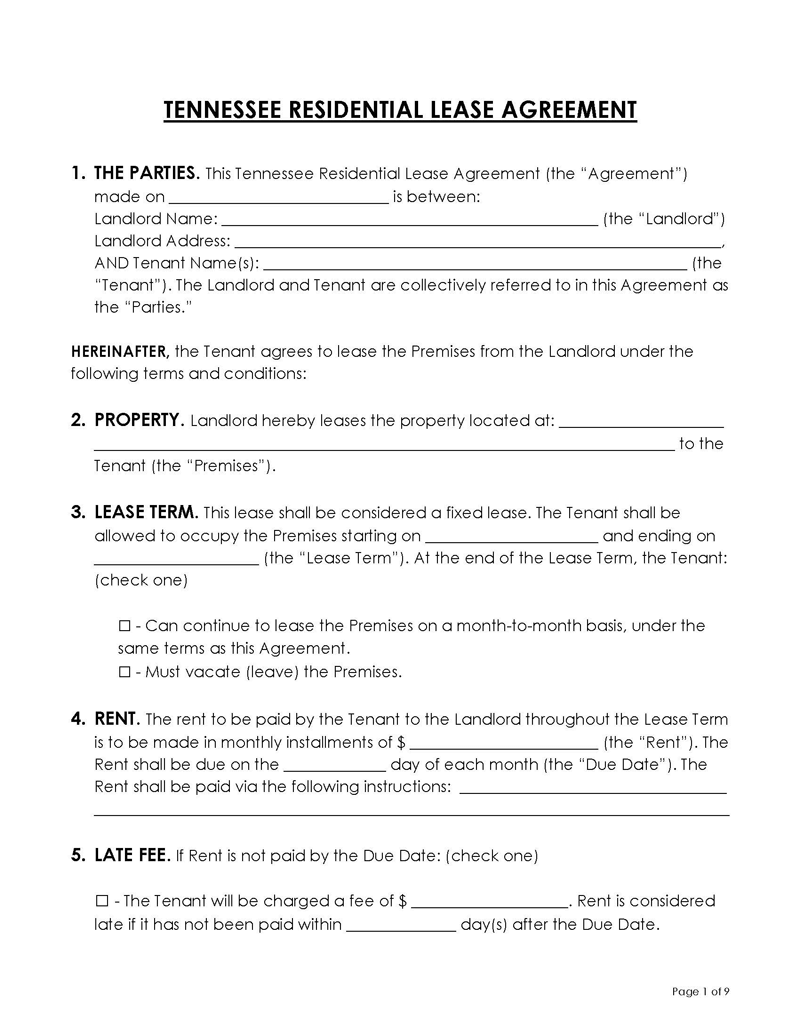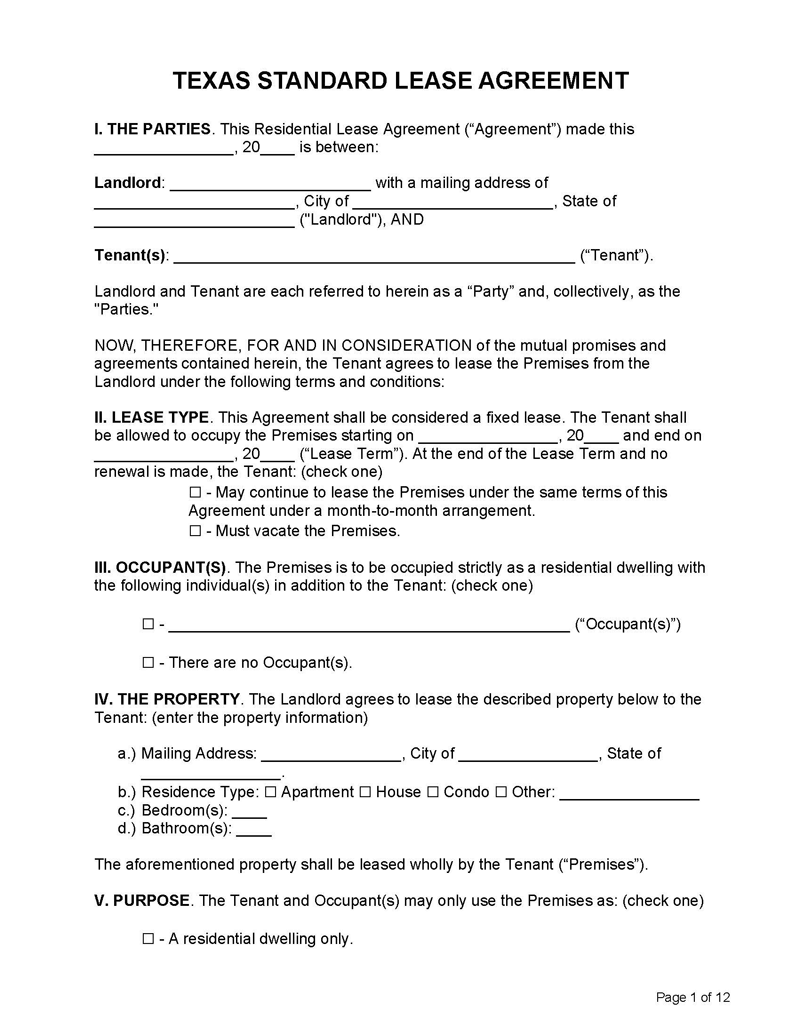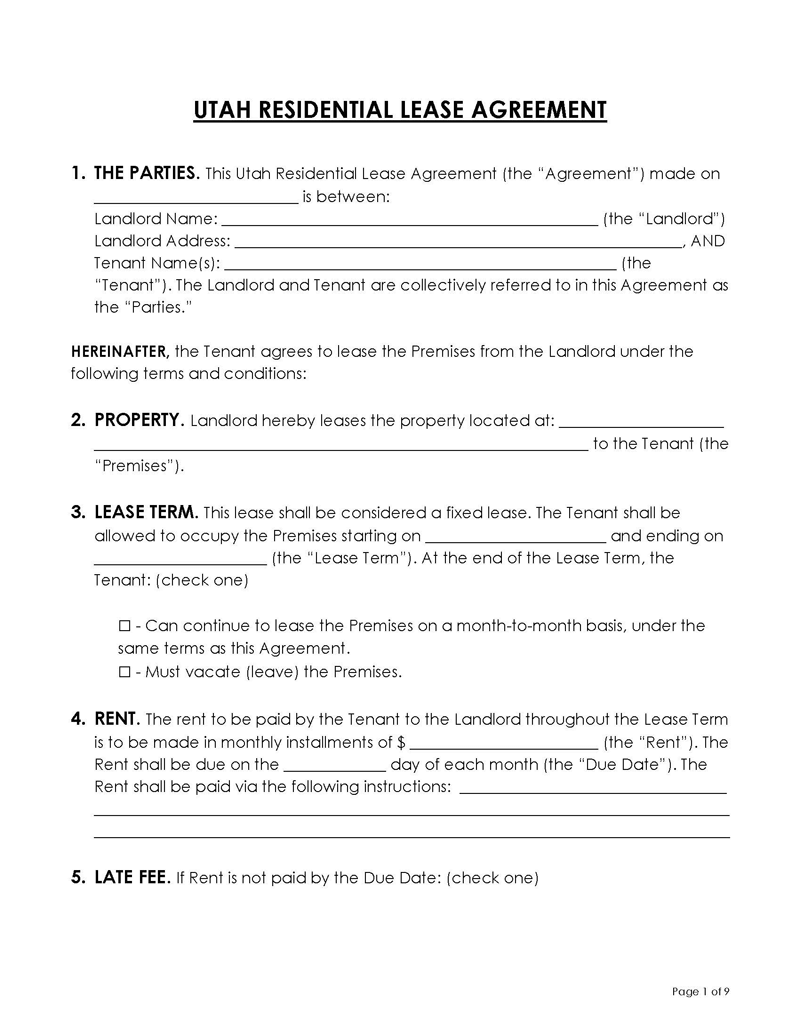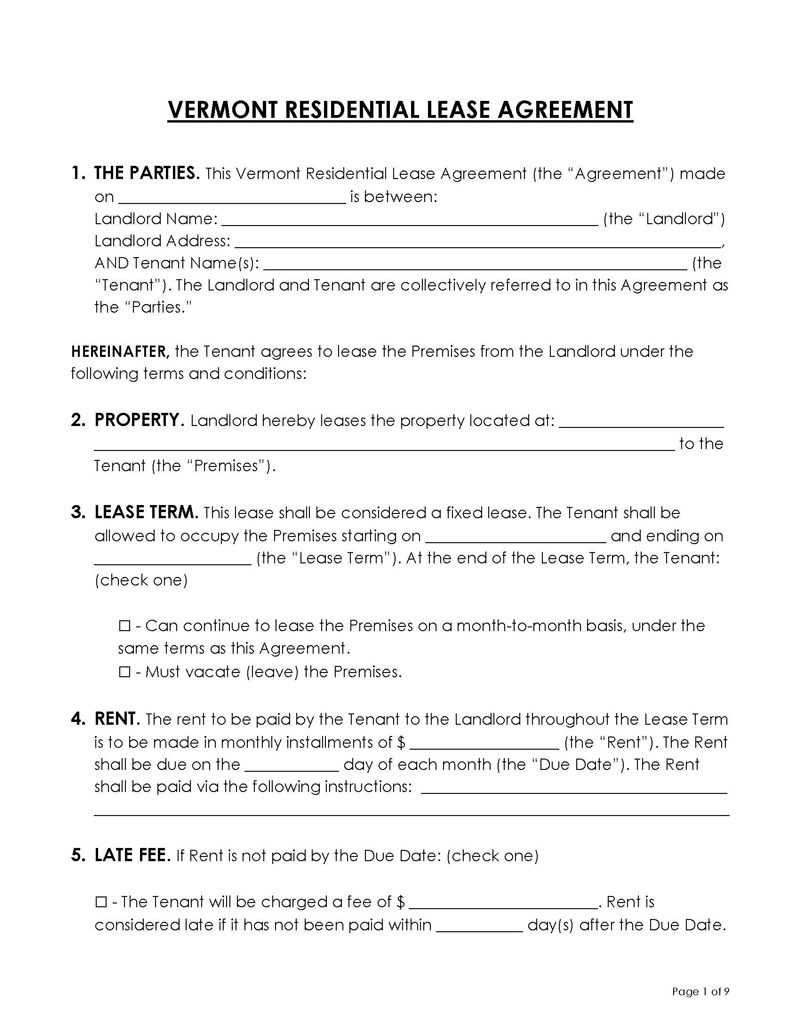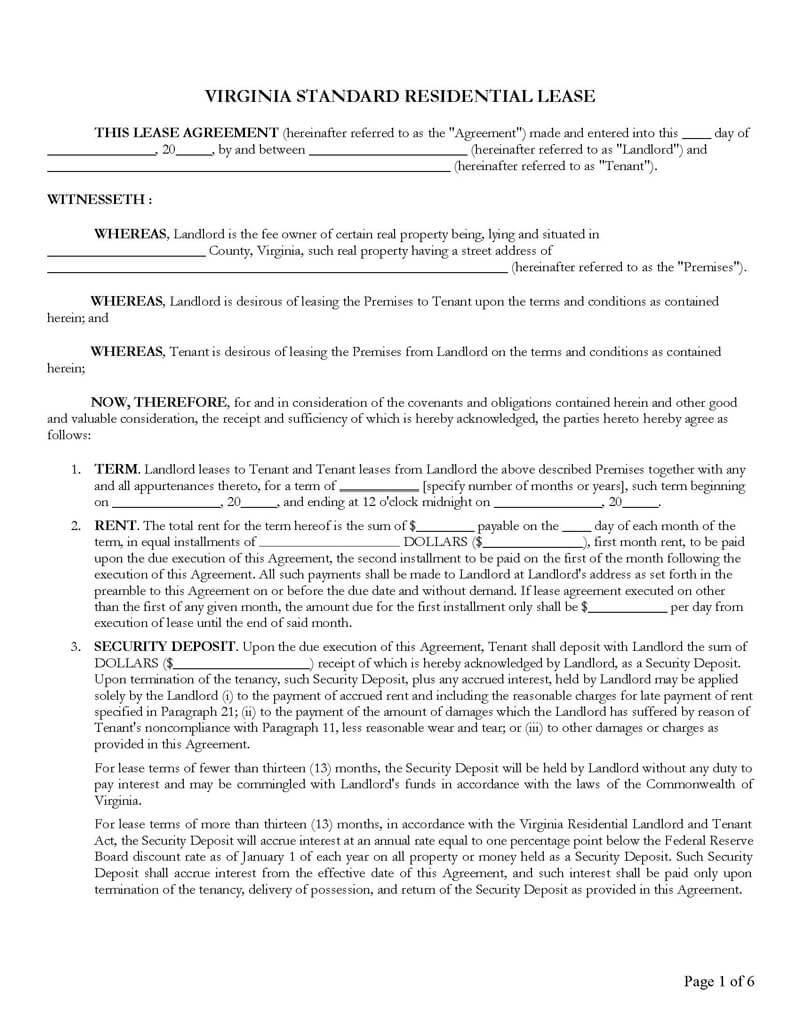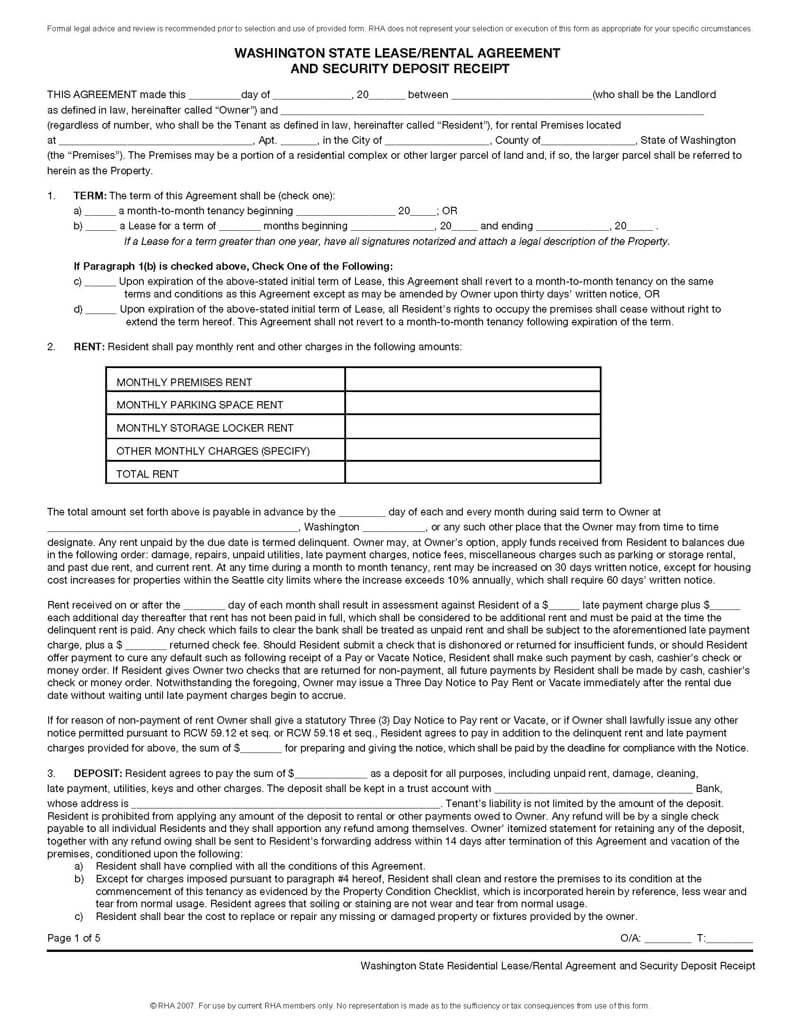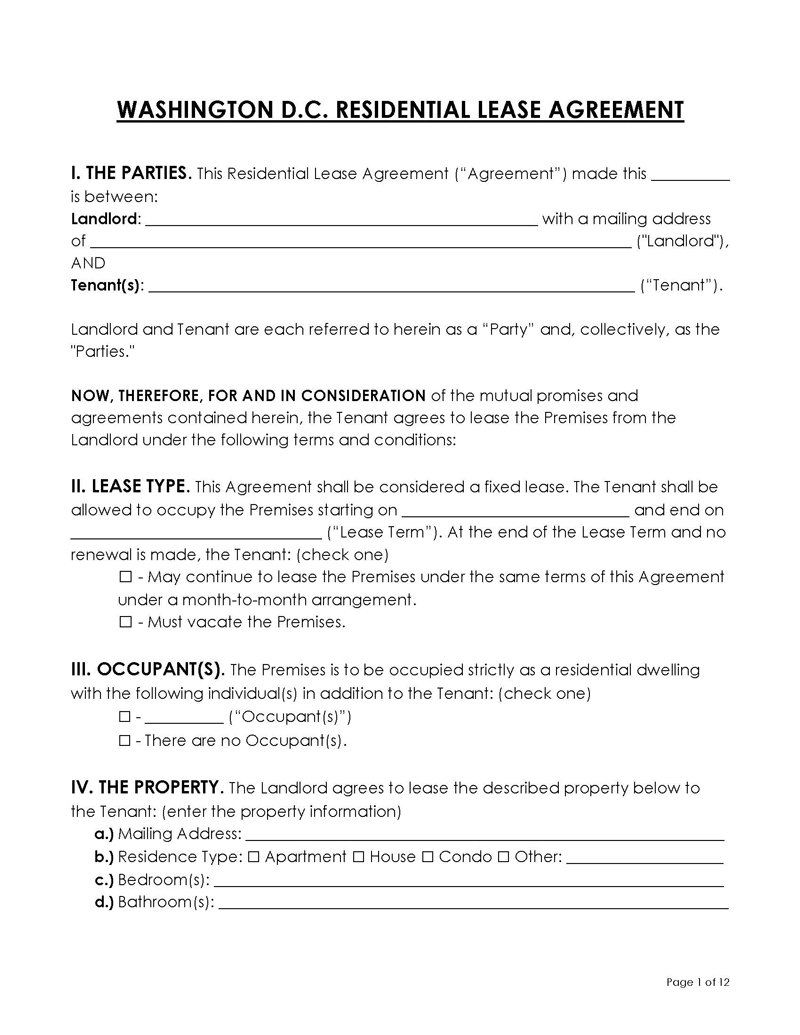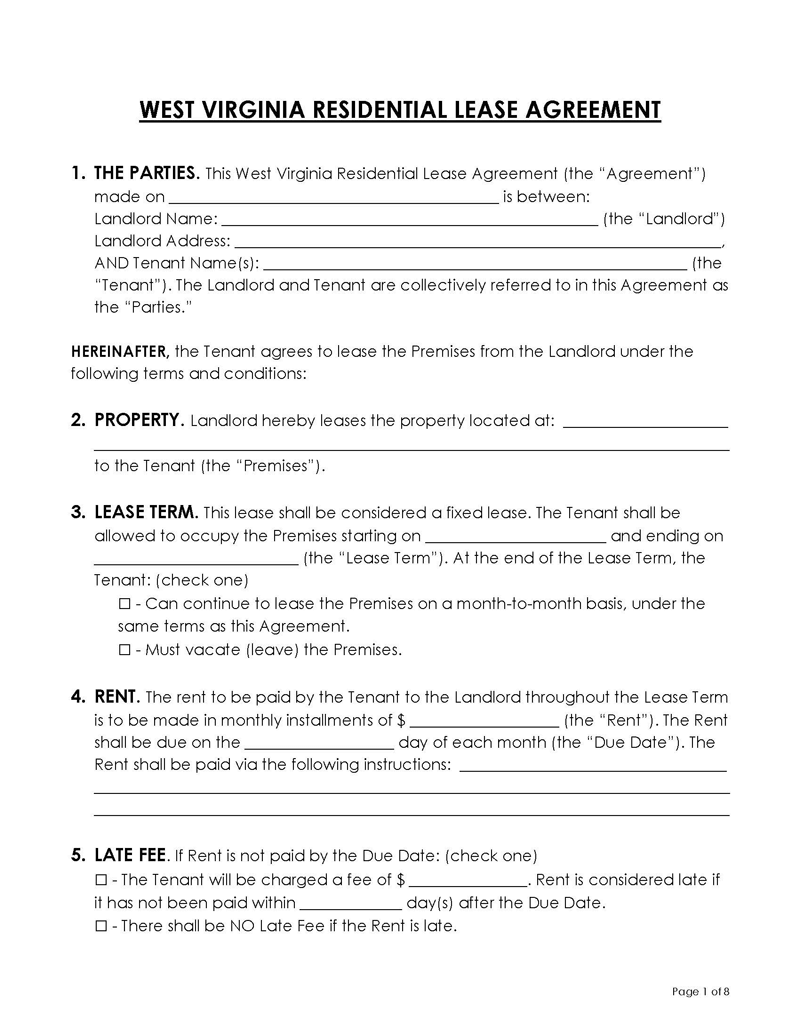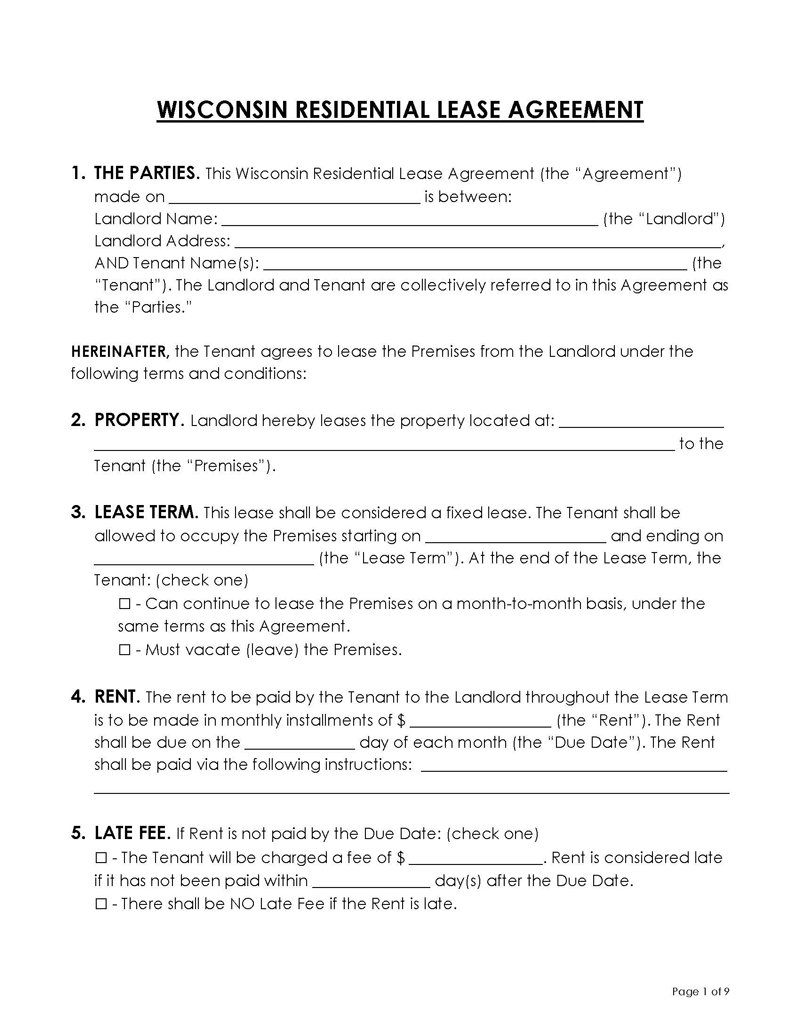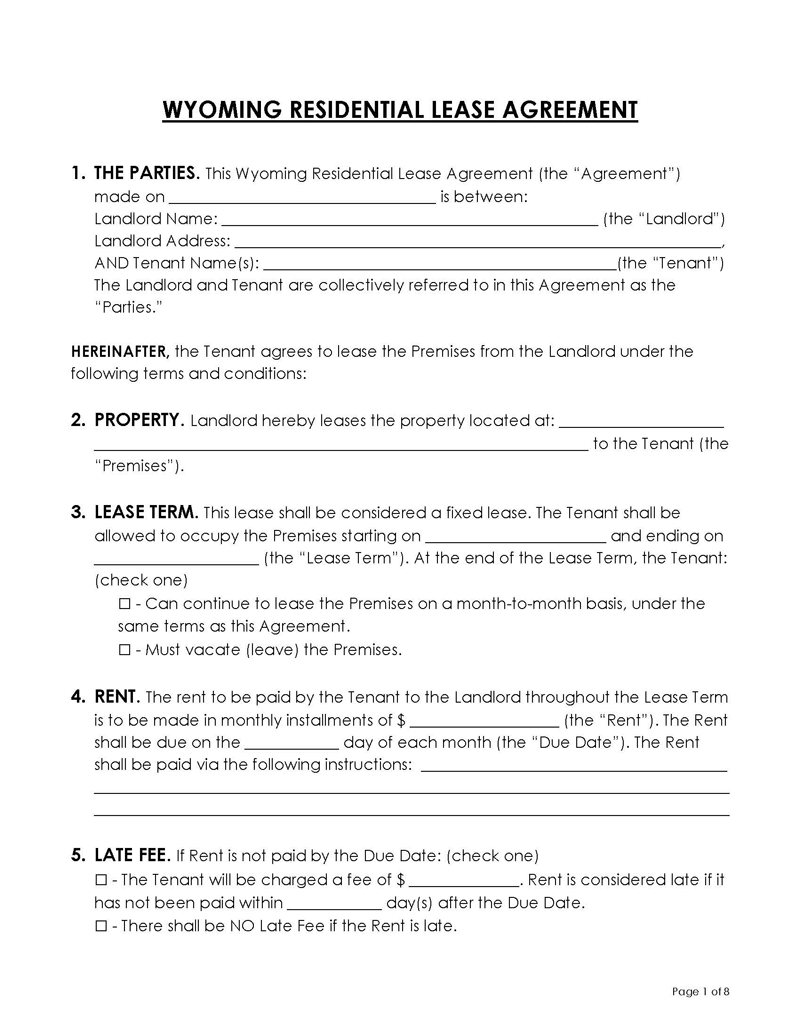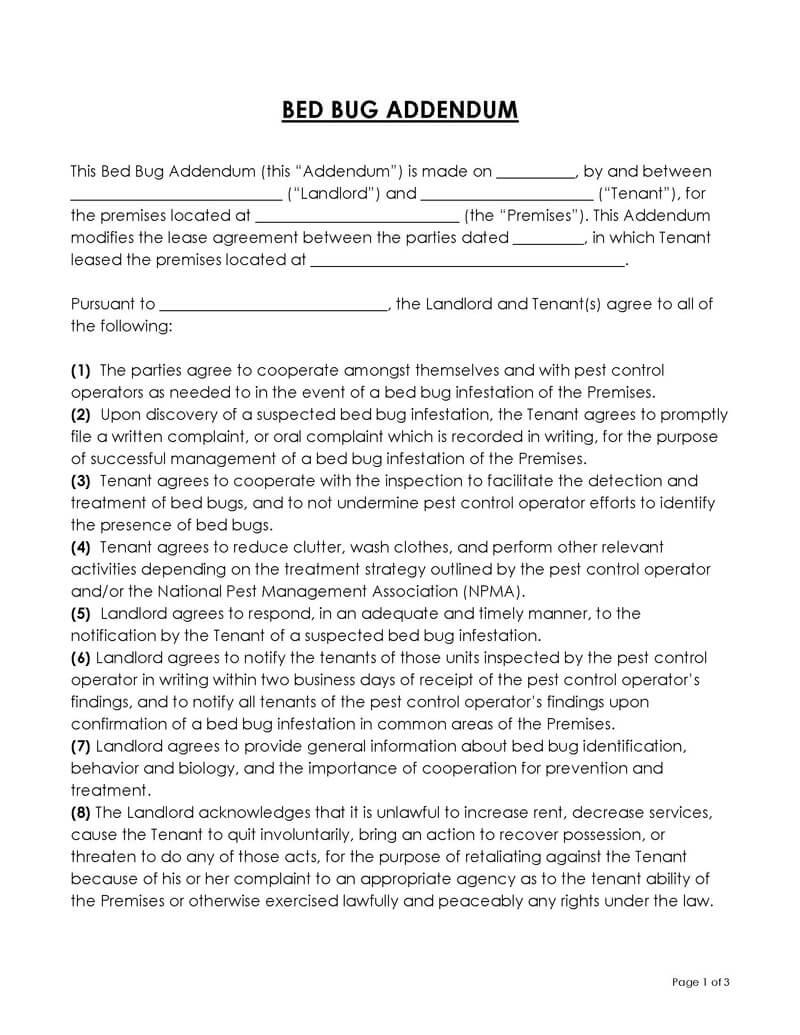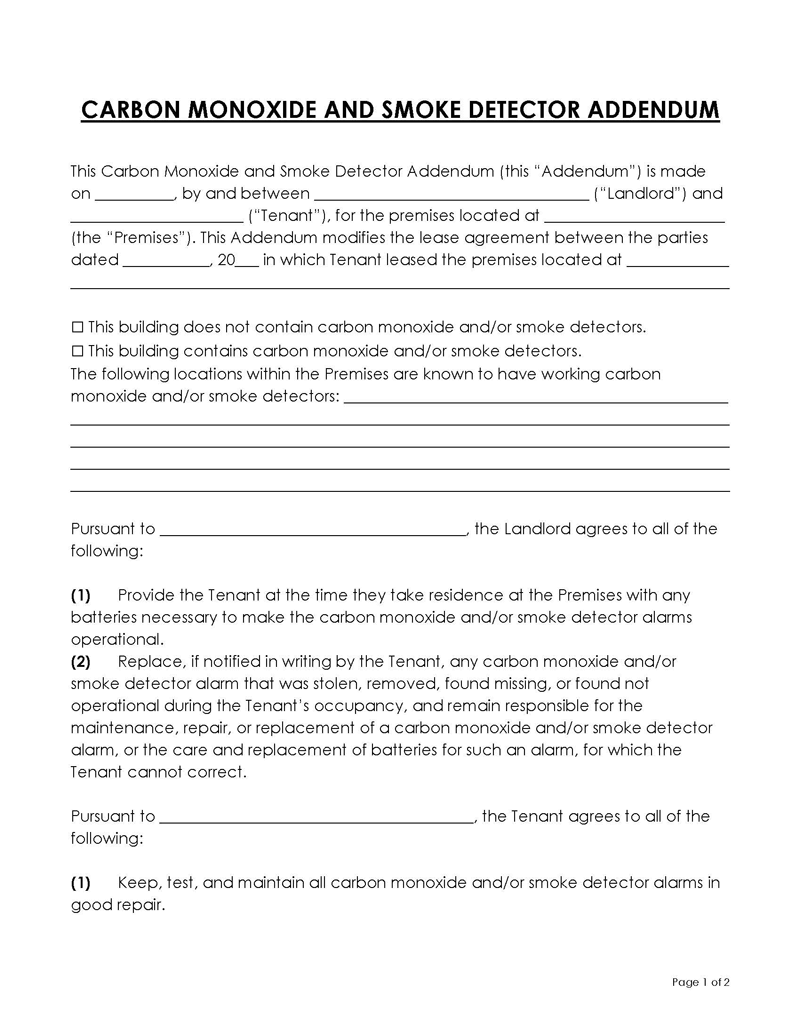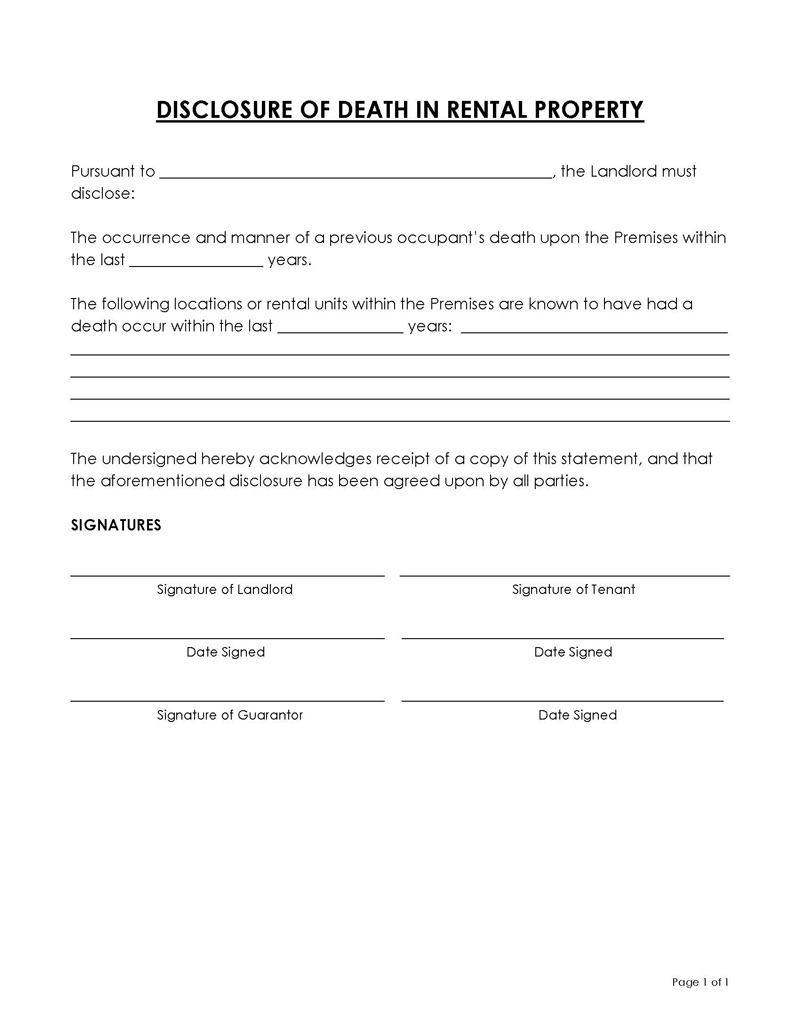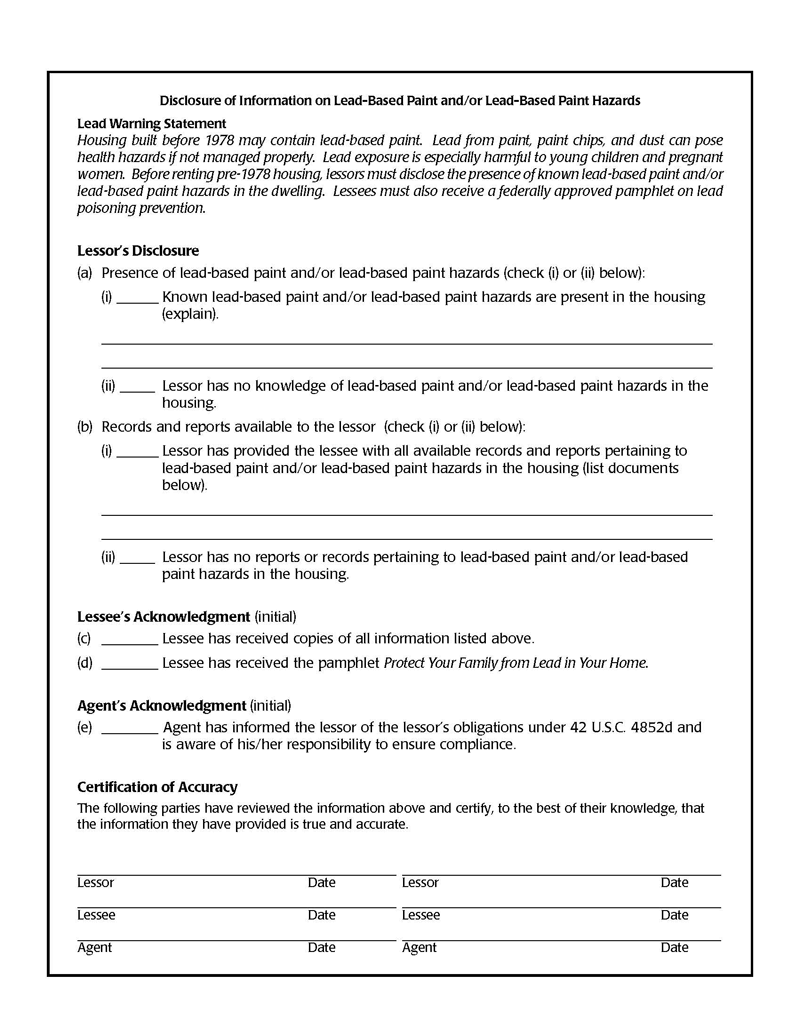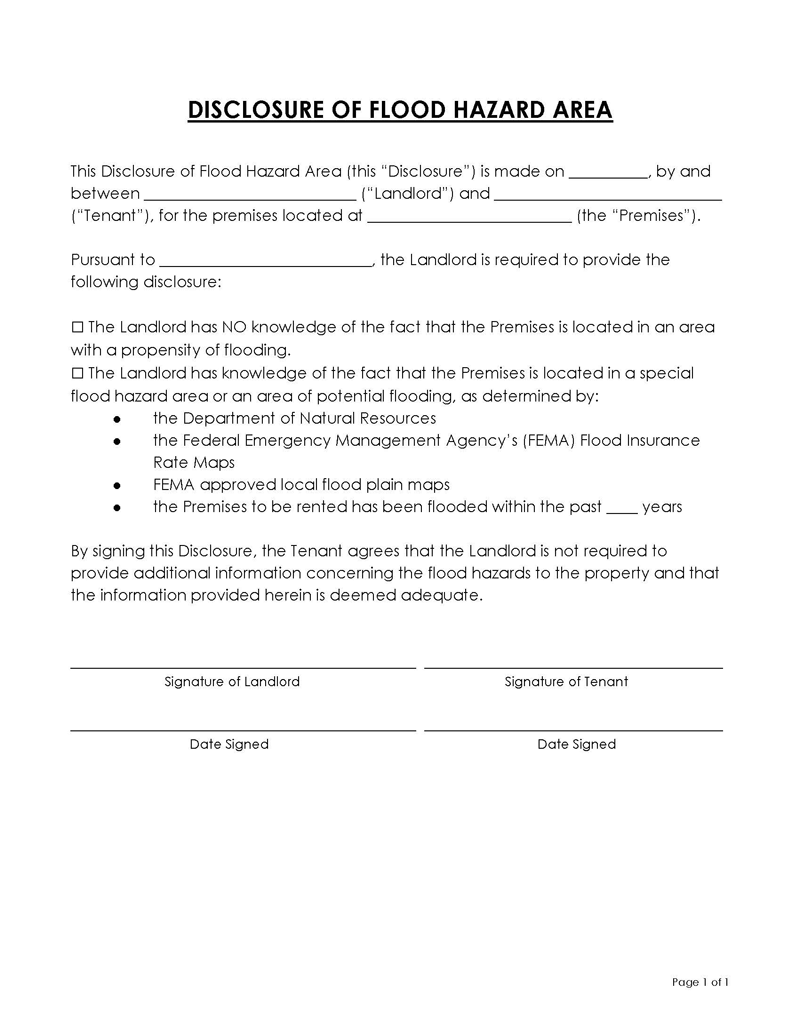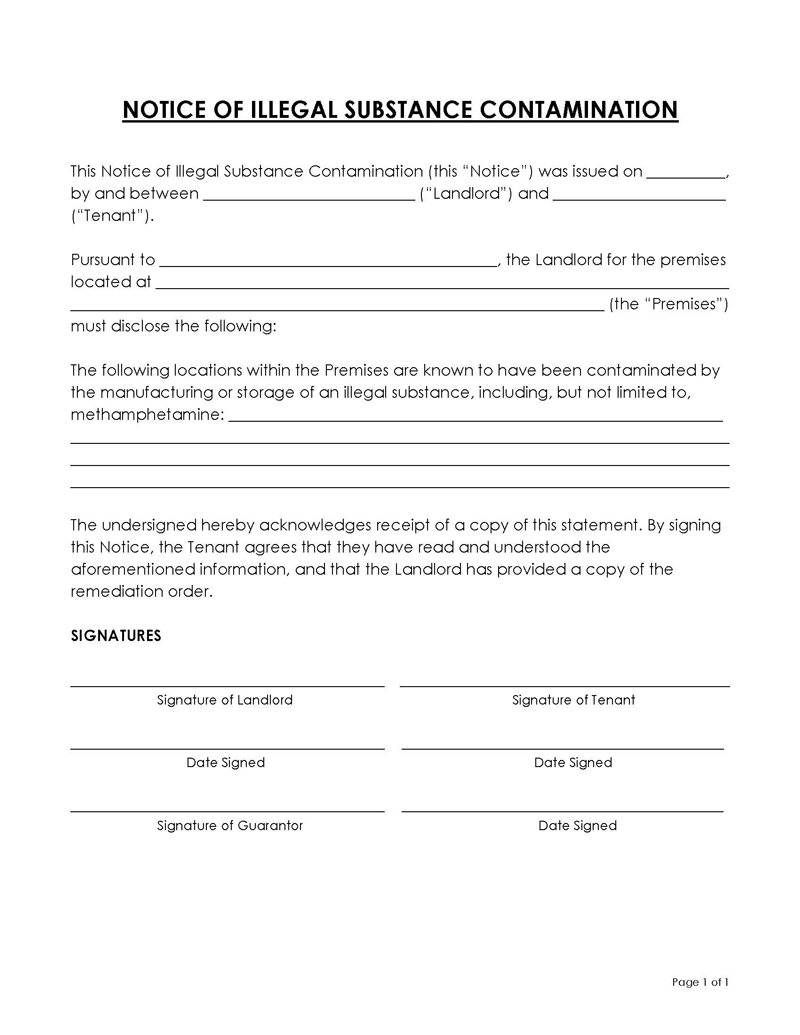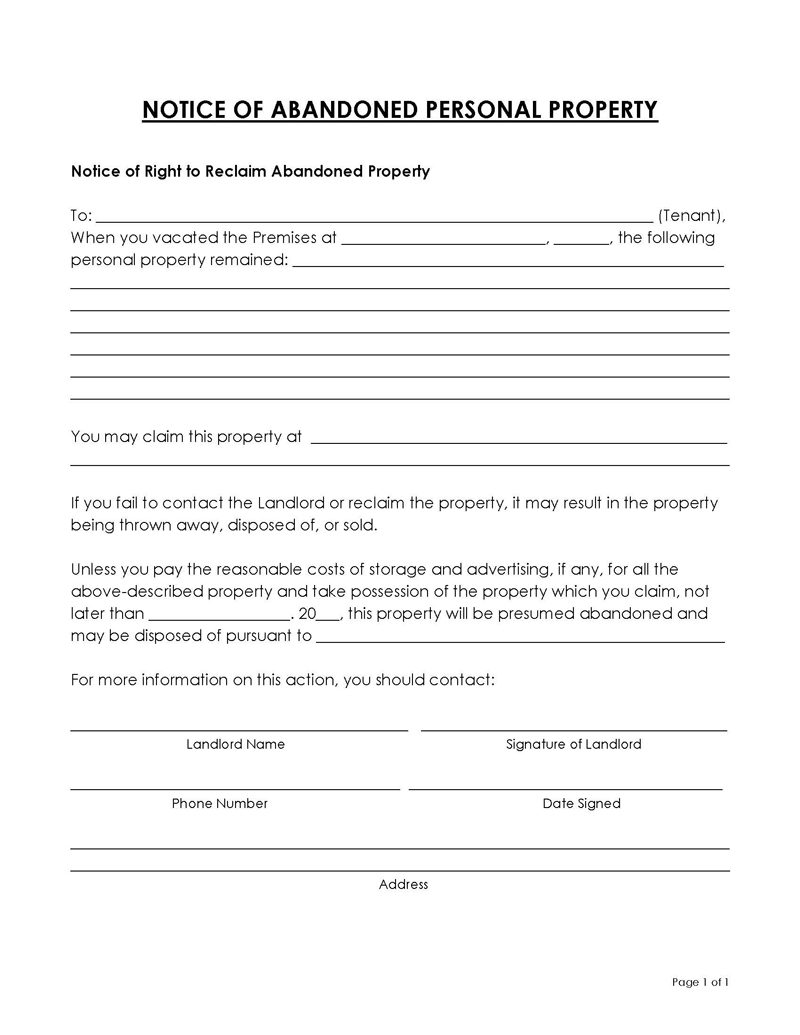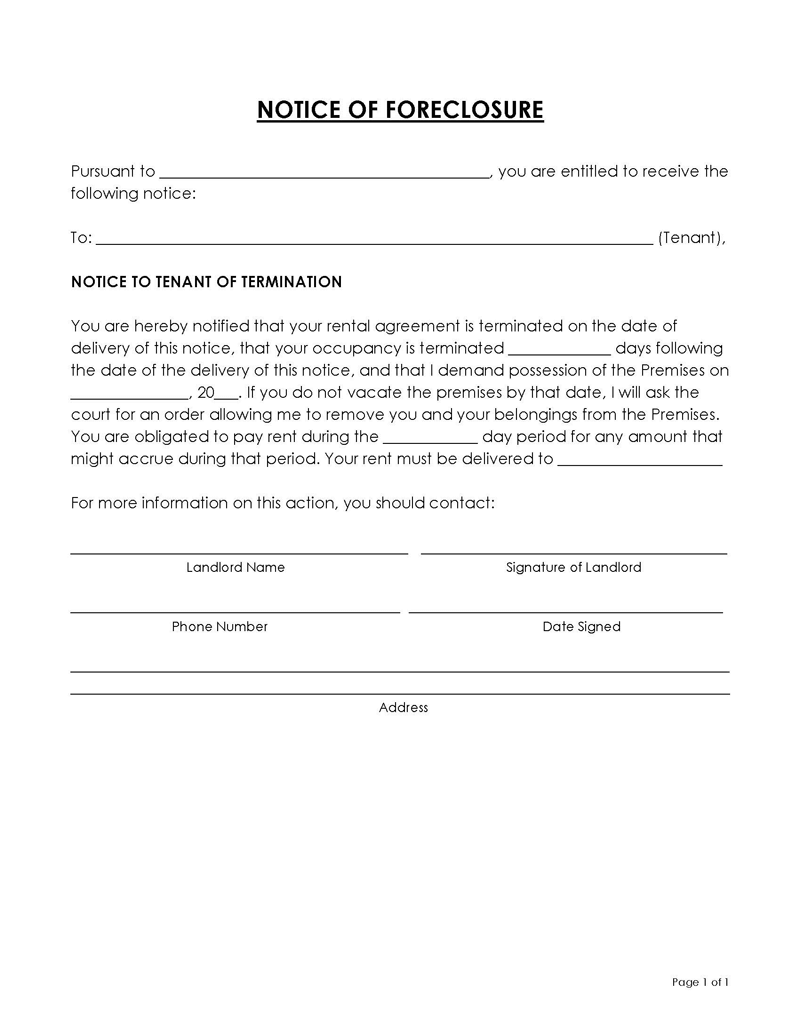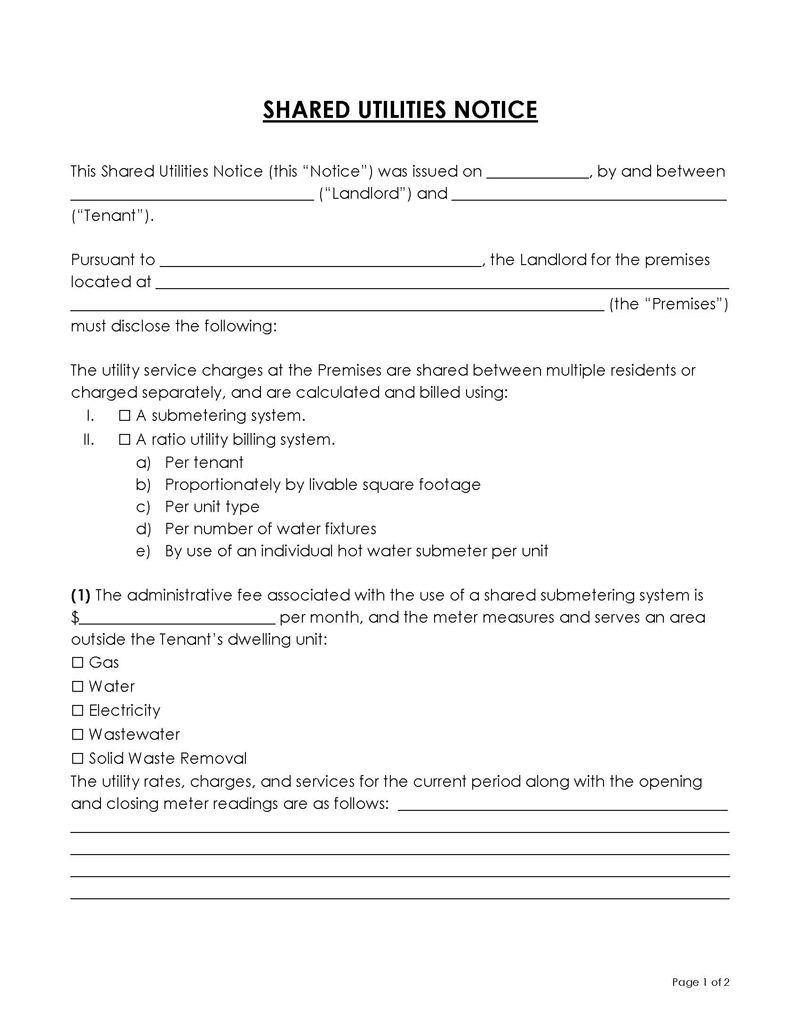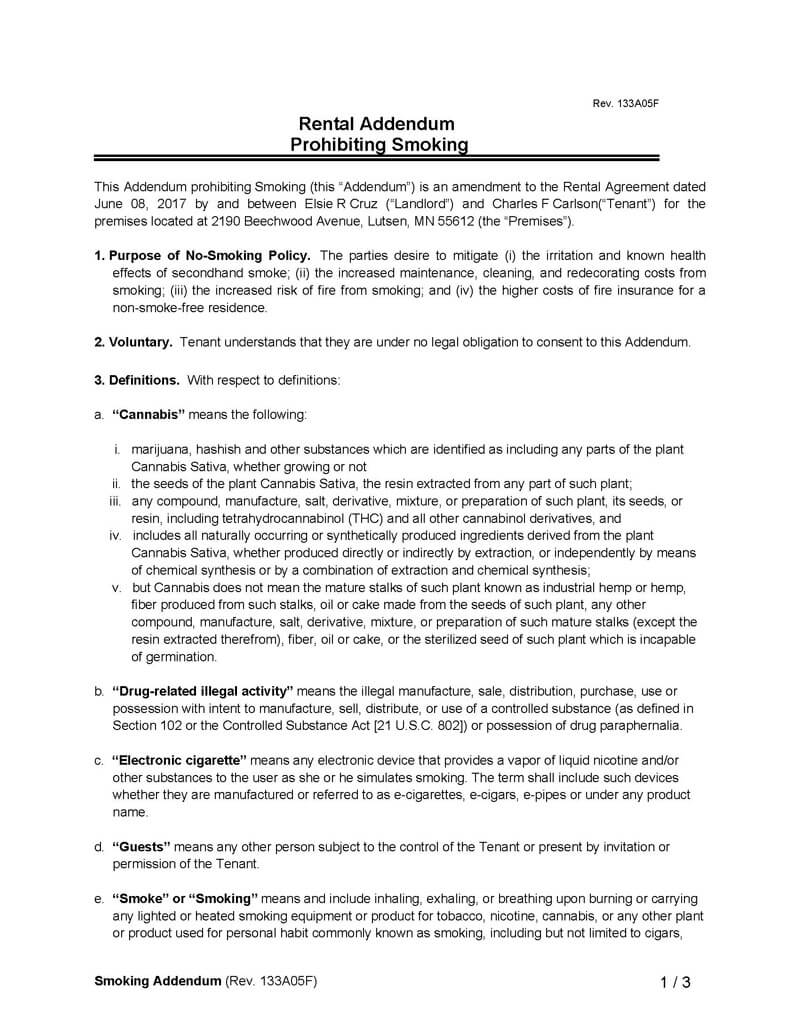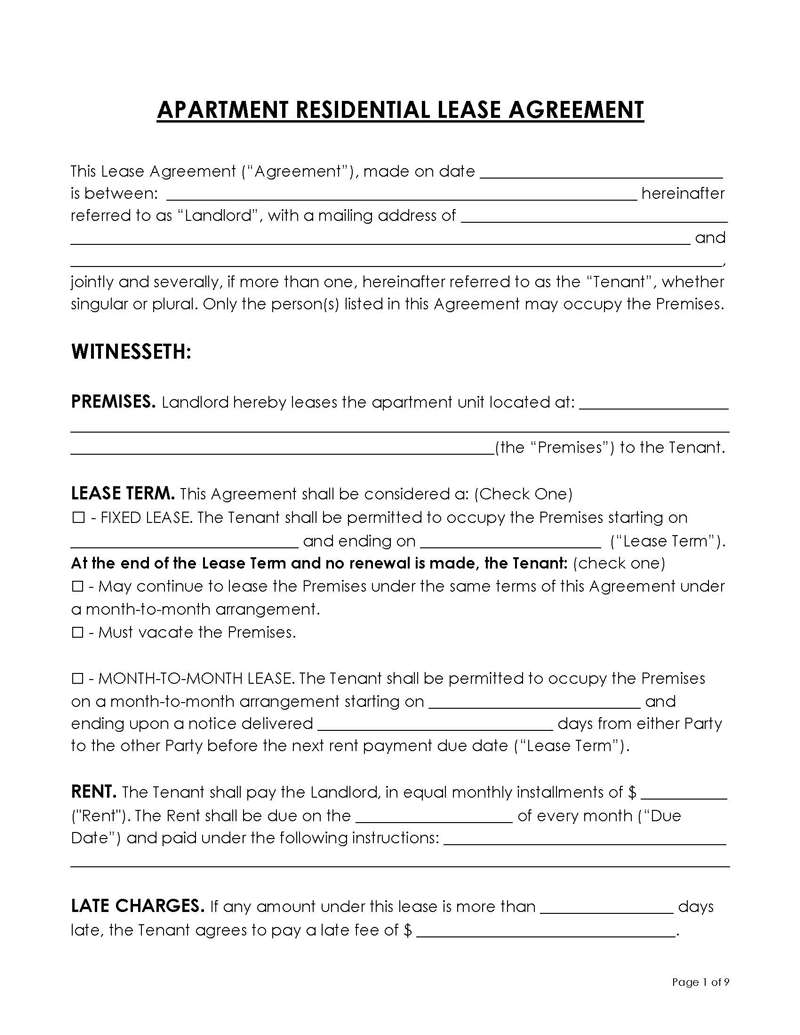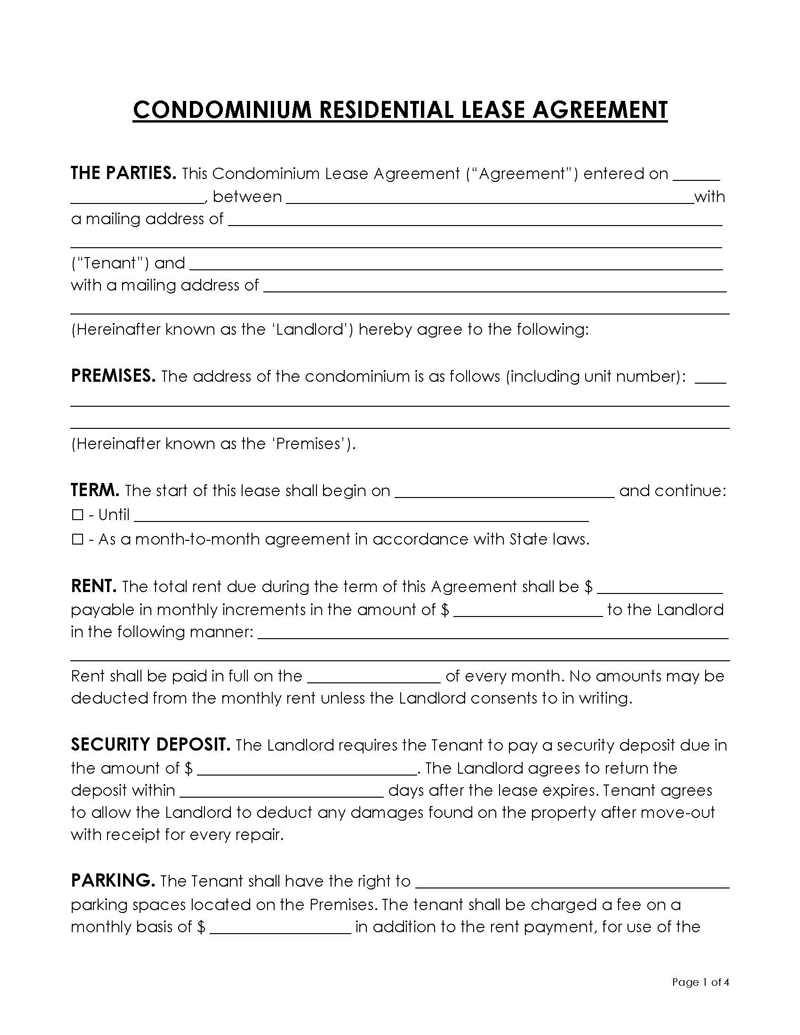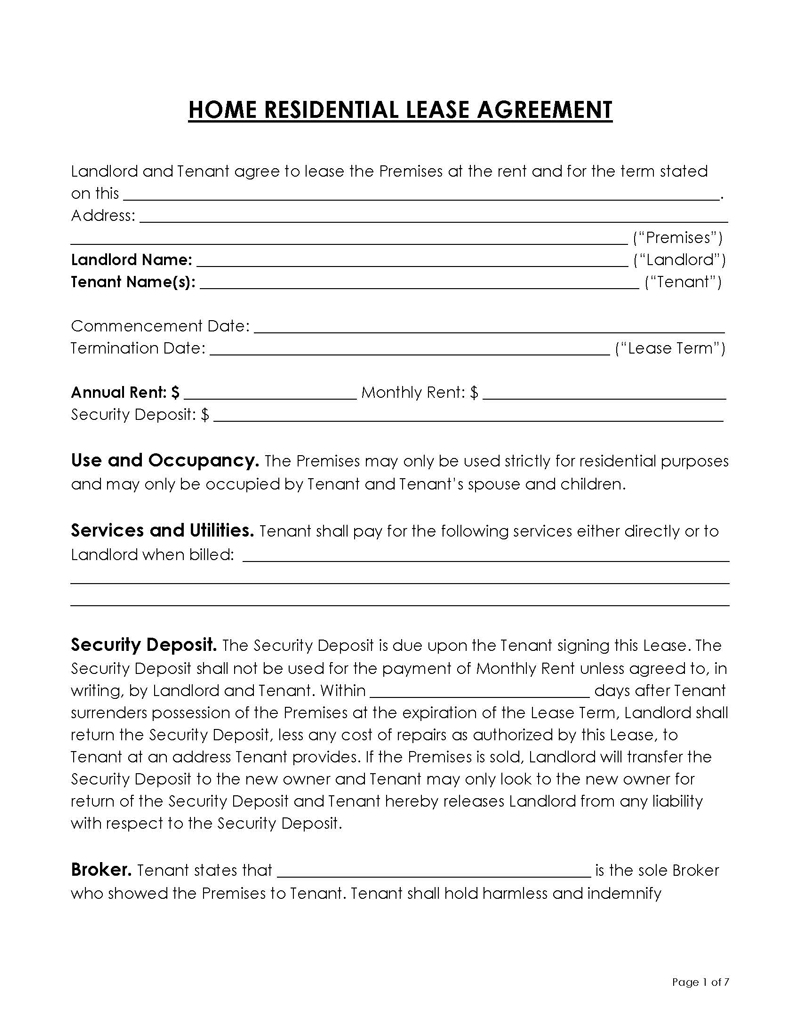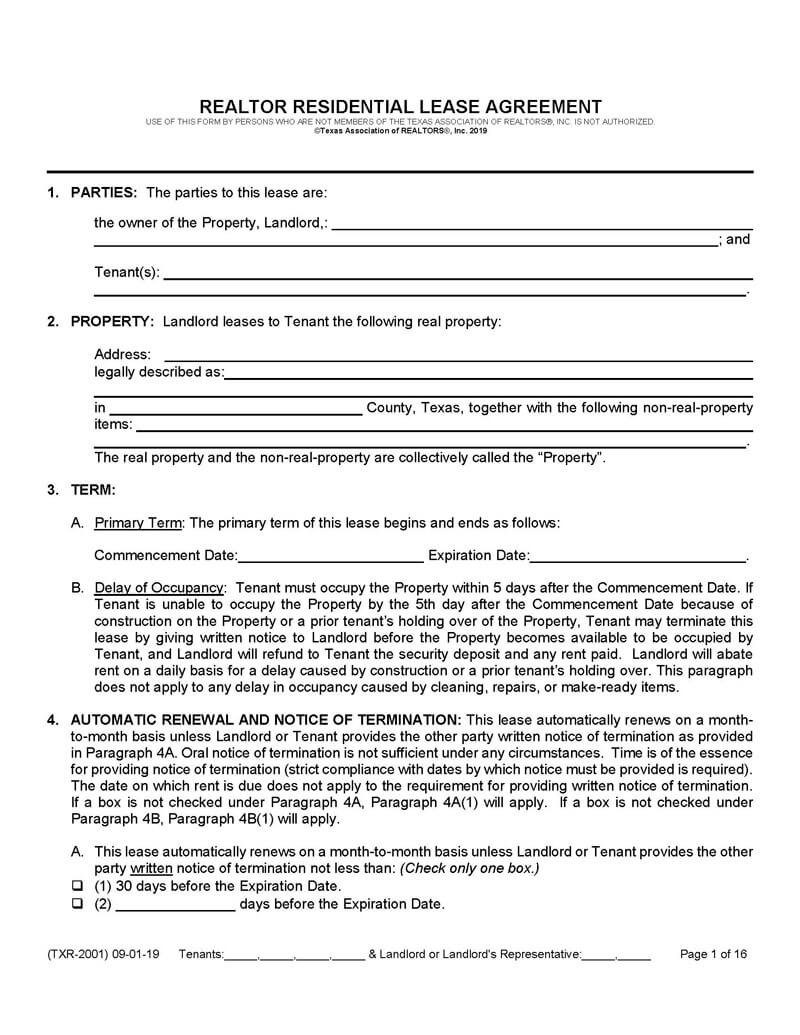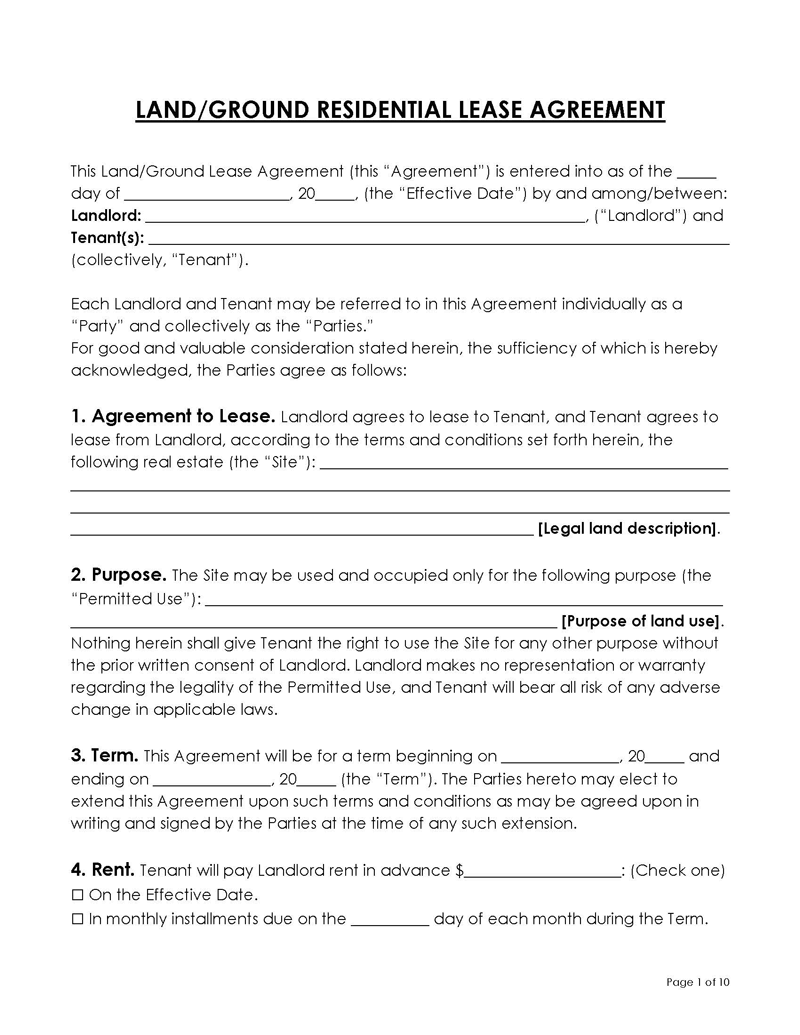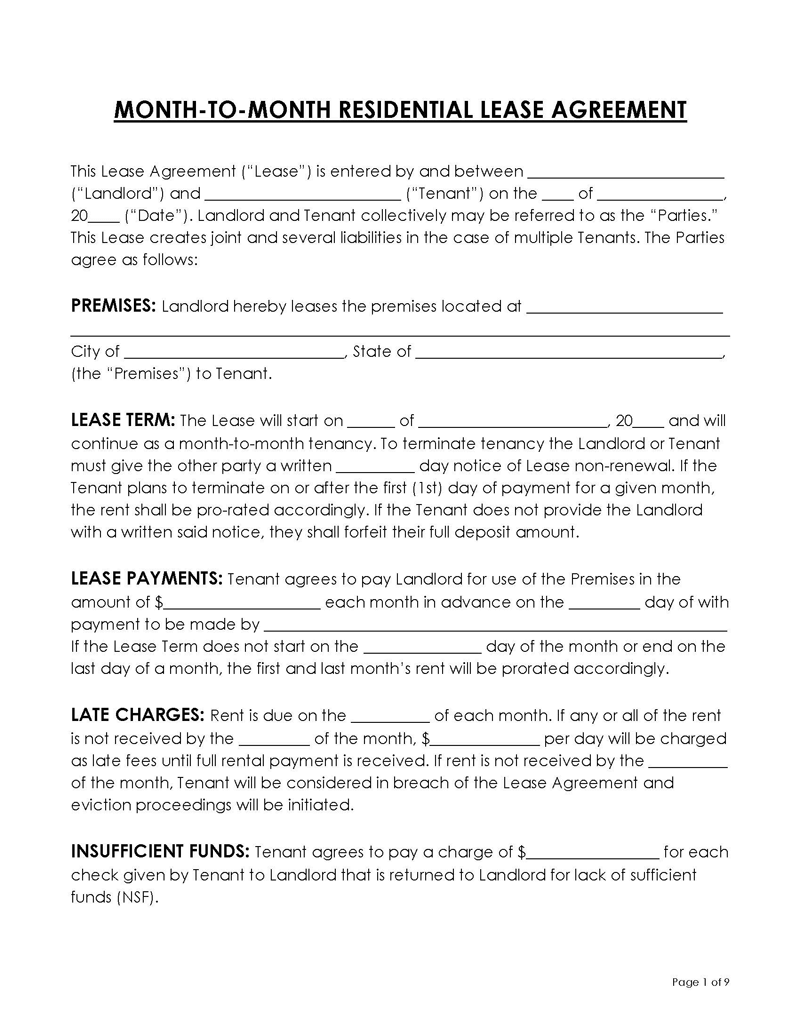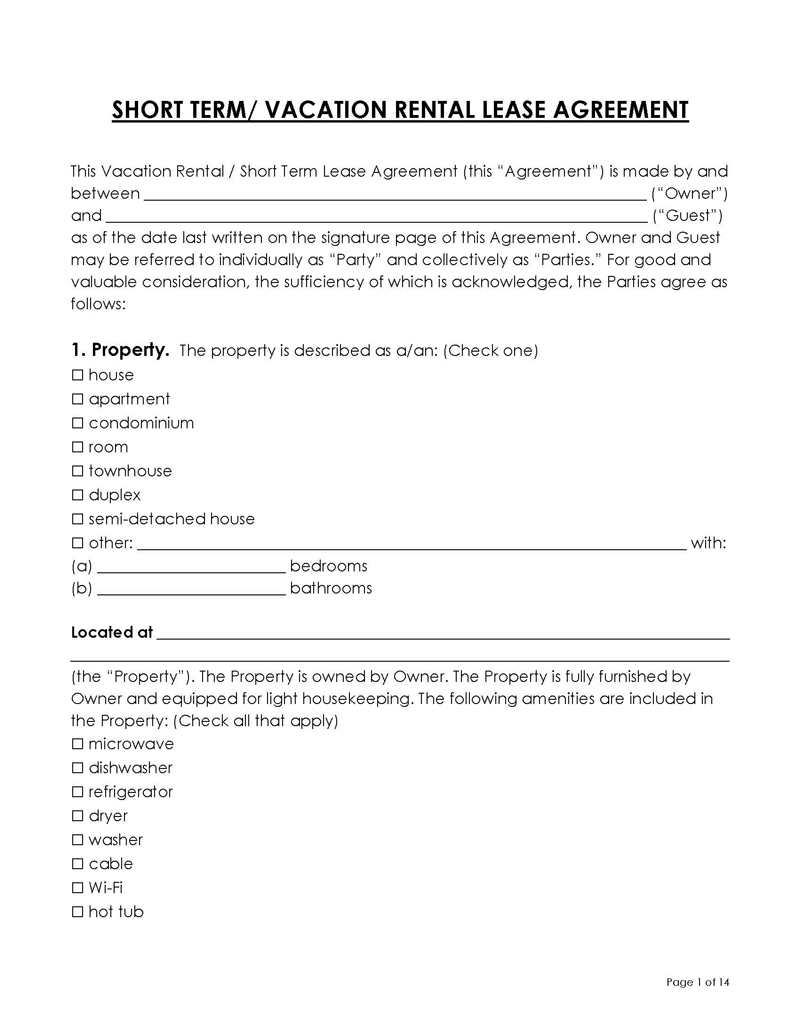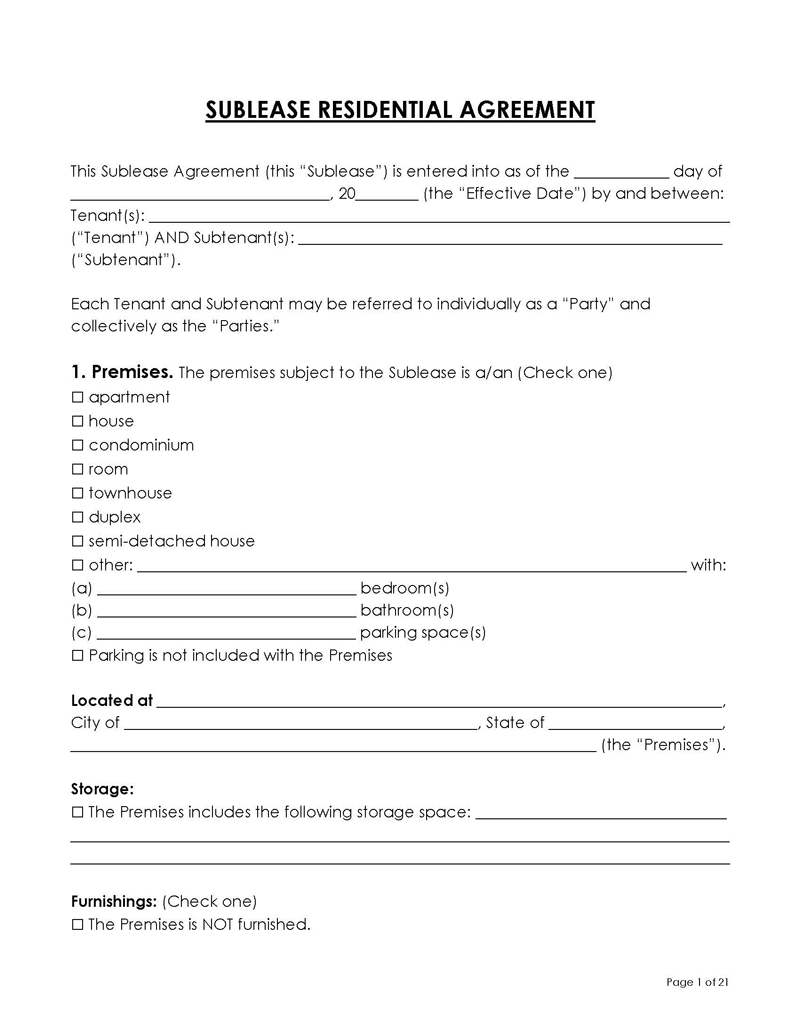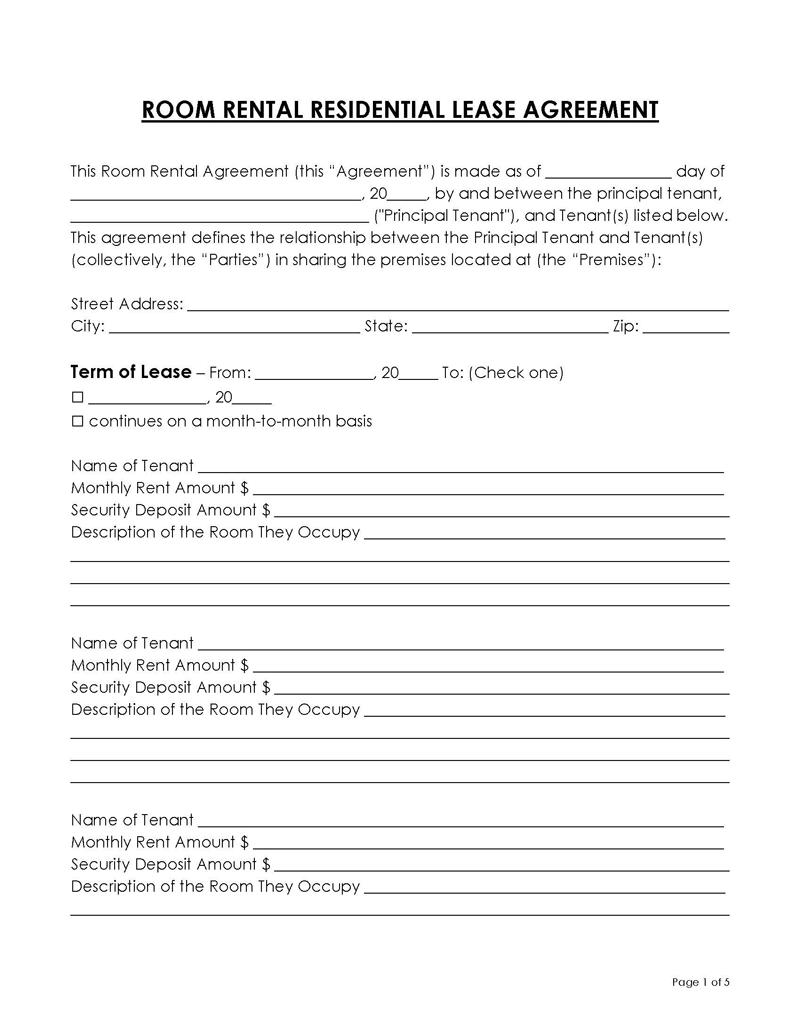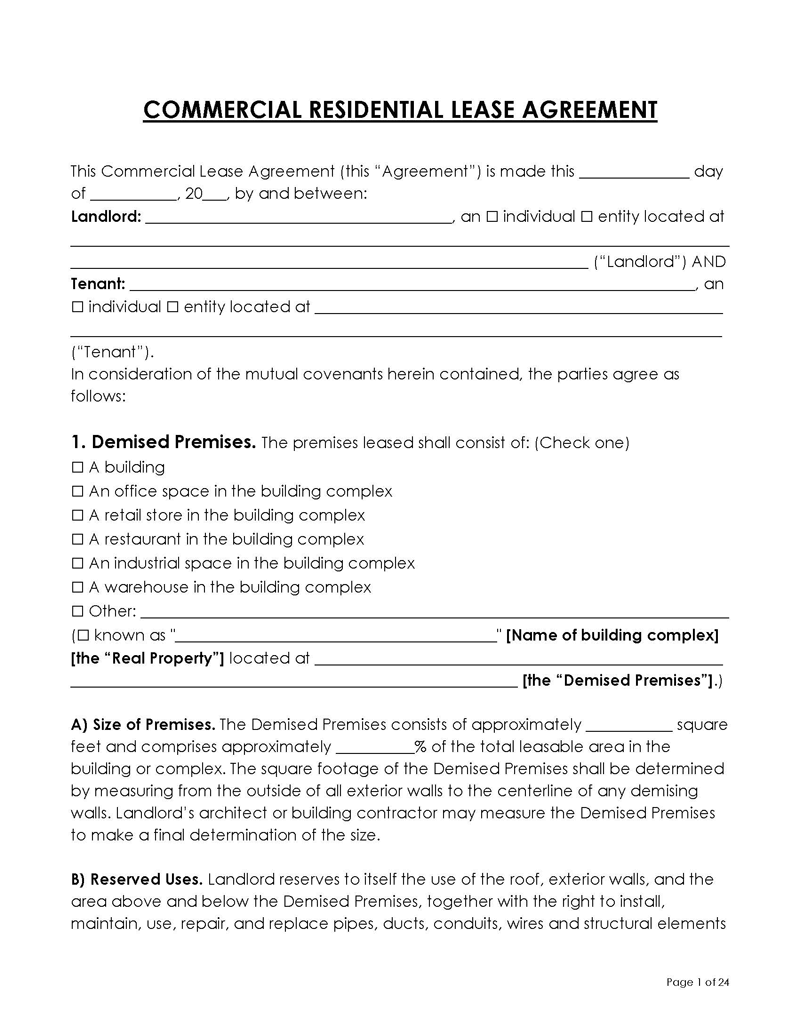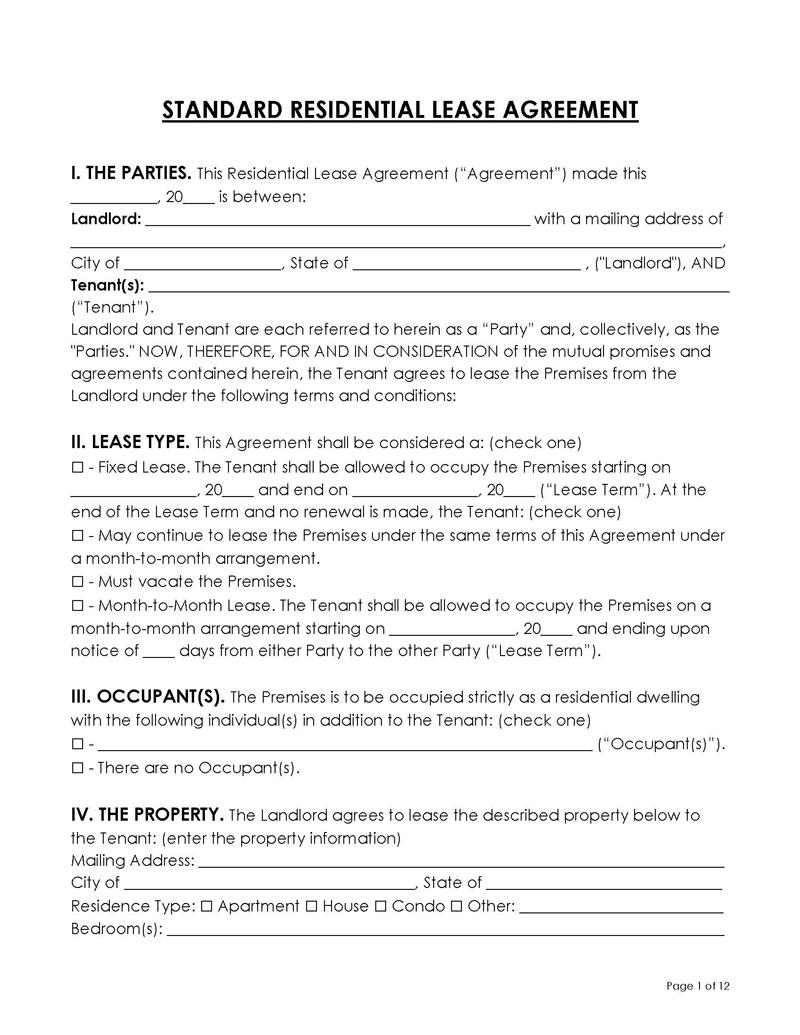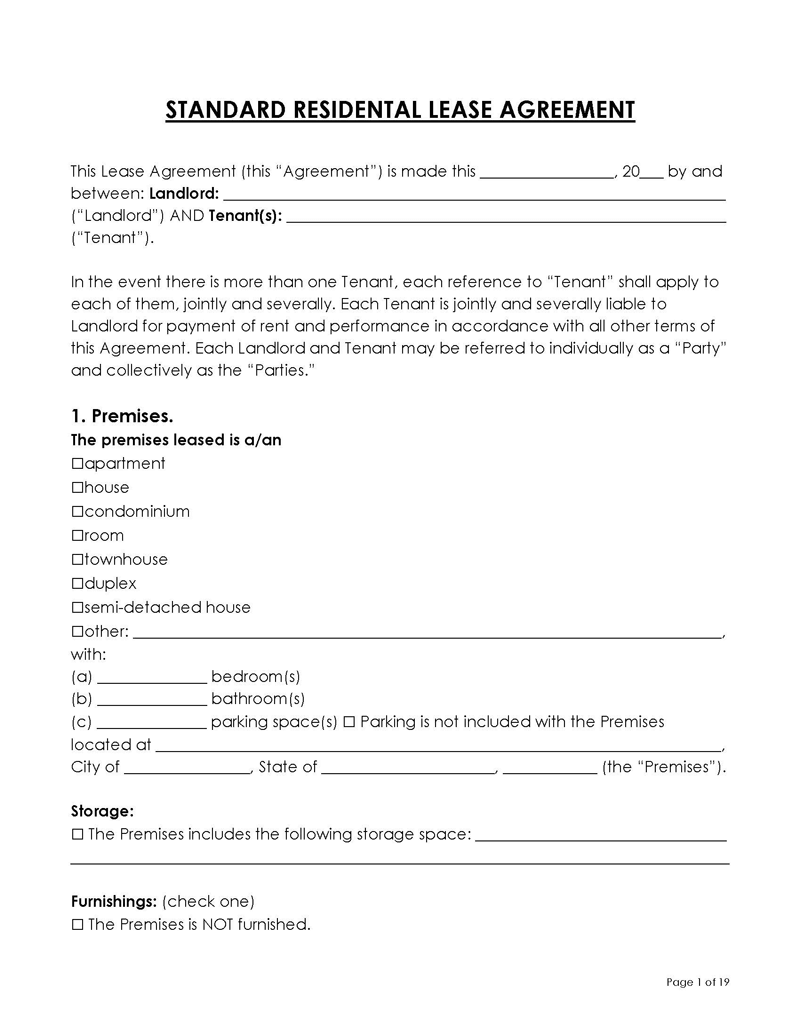When looking for an apartment or a property to rent, the property should meet several legal and personal requirements. If the tenant finds the right property, they can proceed to sign a residential lease agreement with the property owner. However, before signing a lease agreement, it is necessary to evaluate and examine all details about the property, such as its current condition, the payments to be made, and the property’s location.
A residential agreement is an arrangement that allows the tenant to pay their rent monthly. In most cases, this agreement is signed for one year. However, this rental contract can be renewed or extended if the property owner and the tenant agree. This residential agreement also outlines what is expected from both the property owner and the tenant.
In this article, the reader will learn more about a residential lease agreement, its various types, its importance, and what to include.
Residential Lease Agreement Templates
Preparing a residential lease agreement can be hectic, especially if the property owner owns more than one property. Therefore, a lease agreement should be created to meet and complement the property’s specific features. Note that the lease agreement should be perfect and accurate as it documents a contract between the property owner and the tenant. Free residential lease agreement templates are given below to create a lease agreement form that will embody all the needed information.
These templates will allow the property owner to create a perfect lease agreement form effortlessly. Additionally, with these templates, the property owner can simultaneously prepare lease agreements for more than one applicant. This will save them energy and time.
Residential Lease Agreement
A lease agreement is a legal contract between the property owner and the tenant regarding renting a residential property.
Typically, a lease agreement is used to protect the rights of the property owner and the tenant.
Furthermore, the residential lease agreement ensures that the landlord and the tenant know and adhere to all legal regulations regarding property leasing. The involved parties need to discuss and agree on the security deposit amount, rent payment arrangements, utilities, pet policy, moving-out rules, and any other necessary information concerning the leasing agreement.
A lease agreement is essential for a property owner as it acts as proof of a consensual agreement between them and the tenant. The lease agreement also shows that the tenant agreed to pay the rent and other charges required when living on the property. Therefore, the property owner can use the lease agreement if the tenant occupies the rented property.
Consequently, the tenants use the agreement to protect themselves from being exploited by the property owners. With the agreement in place, the tenants can peacefully and safely reside in their rented units without any disturbances. Furthermore, the lease agreement permits the tenant to occupy the property depending on the agreed period. Note that different states have different laws that govern and protect tenants from exploitation.
Alternate Names
In most states, a lease agreement is regulated and overseen by state-specific, municipal, and federal property owner-tenant laws.
A residential lease agreement can also be referred to as:
- A rental agreement
- A rent-to-own lease agreement
- A lease form
- A tenancy agreement
- An apartment lease
- A house rental agreement
- A rental lease agreement
- A rental contract
- A lease agreement
Important: Both the property owner and the tenant can adjust the specifications and requirements of the lease agreement to satisfy their needs. This can be done by using a lease amendment form.
When, Why, and Who Needs Residential Lease Agreement?
A residential agreement is crucial to both the property owner and the tenant. The lease agreement allows the property owner and the tenant to reach a favorable agreement. This eliminates any unwanted exploitations from both parties.
When
A lease agreement is used whenever a residential property is being leased to a potential tenant. The essence of a lease agreement is to ensure that all critical details are discussed and agreed upon between the property owner and the tenant before the occupancy occurs. Note that the discussions and agreements reached should be entered and recorded in a lease agreement form.
A lease contract can be used when renting rooms, mobile homes, condos, apartments, single-family homes, and any other properties designed for residency.
Why
A lease agreement is a legal requirement in most states. The lease agreement ensures that neither the landlord nor the tenant exploits the other party financially.
Furthermore, a lease contract proves the agreement between the property owner and the tenant. The document is essential as it shows when the agreement will end and the renewal terms. It also shows the amount of rent to be paid and the acceptable payment methods. A verbal agreement may omit crucial leasing information. Therefore, lease agreement forms are necessary as they protect both the landlord and the tenant. A residential agreement will lower the risk of disputes and mistreatment from both parties.
Who
A lease agreement is required for an individual renting a residential property to or from someone or an organization. A residential lease agreement is essential to landlords who own commercial or residential properties. Additionally, the residential lease agreement is helpful to homeowners looking to rent a room in their house.
A residential lease agreement can be used by tenants who desire to purchase and permanently own the property they are currently renting. Also, the tenant can use the lease agreement if they want to terminate their lease contract with the landlord.
Moreover, tenant placement services and property managers can use a lease agreement when renting a property. This agreement is essential as it makes the property owners and tenants avoid unnecessary conflicts that may cause legal issues.
Fixed Lease Vs. Monthly Lease
A fixed lease agreement is when a tenant agrees to lease a property over a fixed period. A fixed lease usually has a starting and an ending date. Commonly, a fixed-term lease can last from six months to a year. However, certain fixed lease agreements can extend to three years. A fixed lease strictly adheres to the set period, and the set agreement cannot be adjusted or altered in any way.
A monthly lease is an agreement where a tenant renews their residency every month. A monthly lease is commonly referred to as a month-to-month lease. On a monthly lease, the tenancy renewal is optional, and the contract can be terminated at any time by the property owner or the tenant. A month-to-month lease agreement can be adjusted if advance notice is presented.
Lease Vs. Rental Agreement
A lease is an agreement between a property owner and a tenant that lasts for an extended time. For instance, a lease can extend for a year or more, depending on the agreement. On the other hand, a rental agreement is a contract between a property owner and a tenant that exists for a short period. In most cases, a rental agreement is active from month to month.
Notably, lease and rental agreements are legal documents that outline an agreement between a property owner and a tenant. They both contain similar information and are commonly used to solve similar rental issues.
Renting a Property
The property owner is responsible for ensuring that the property is in perfect condition for occupancy. Below are steps that a property owner can follow if they want to attract potential tenants to their property with ease:
Show the premises to the tenants
The first step in attracting potential tenants is allowing them to see the whole property. This will allow them to see and examine the features within the premises. Then, if they like the property’s condition, they might inquire about the rental requirements.
However, the property owner can hire a caretaker or a managing company to take care of the property. This is convenient if the property owner has several properties. The caretaker will be responsible for advertising and showing the property to potential tenants to improve the chances of renting the property.
Tenant fills the rental application form
Once the tenant shows their interest in the property, the landlord can hand them a rental application form. The application form requires the applicant to key in their information. The information provided by the tenant will allow the property owner to examine the applicant to see if they are suitable for leasing.
The rental application form contains the applicant’s name, contact details, income level, and employment history.
Run a background credit check
The property owner can do a background credit check with the tenant’s application form. This allows them to see if the applicant has any criminal background. Additionally, they will check if the applicant has a good or bad credit score. Based on the credit history, the property owner will understand if the applicant can afford the rent and any other needed charges.
There are states where it is against the law to deny an individual occupancy in a property based on their credit score history or criminal record/history. In most cases, this is considered discrimination.
Tip: The landlord must examine, evaluate, and screen the applicants. This allows the property owner to avoid problematic and unqualified tenants. In most cases, the tenant pays for the screening process to be carried out.
Verify tenant’s references
After running a background and credit check, verifying the tenant’s references is necessary. Again, previous property owners and property managers are the best references who can provide accurate insights about the applicant. For example, these references will let the property owner know if the applicant paid their rent on time and if there were any complaints against them in their past renting history.
Additionally, the property owner will know if the applicant has had any police encounters while in their previous residency.
Draft the agreement
The property owner can draft the agreement if the applicant is suitable for the occupancy. The lease agreement will show the tenant that the property owner is willing to rent the property to them. Therefore, it should be drafted precisely to complement the property. The agreement should include all the necessary information, like the property owner and tenant details, the move-in date, the rent to be paid monthly, and utility charges.
Remember to include the property rules and the penalties to be faced when the tenant does not follow these rules. Once the agreement is ready, both parties will sign the document to make it official.
Handover the keys to the tenant
The property owner can provide the tenant with the keys after the lease agreement has been completed and signed. This will allow the tenant to shift into their new house. It is essential to check the property and make the necessary renovations before the tenant occupies the property. Afterward, the landlord can document the property’s condition before it is occupied. This means the tenant will be responsible for any property damage once the contract expires or ends.
How to Write?
Here is the information to include when preparing a residential lease agreement form:
Names of the parties
The lease agreement form should indicate the names of the parties involved. In this case, the lease agreement should have the names of those who will sign the form once an agreement is reached. Additionally, the lease agreement form should show where each involved party lives.
The lease agreement should include the name of the property owner or property manager and their current address. Also, the name of the tenant and their current address should be outlined in the agreement.
Discuss the property
In the lease agreement, include the name of the property, its exact location and address, and the type of rental units available on the property. This may include houses, studio apartments, condominiums, etc.
Terms of the lease
It is vital to indicate and describe the time period in which the tenant will occupy the property. The lease agreement should outline the starting and ending dates of the term. In addition, the lease agreement should indicate if the tenant signed a fixed-term rental lease or a month-to-month rental lease.
Monthly rental amount
The monthly rental amount to be paid depends on what the property owner has set as the rent payment requirement and the amount charged by other properties within the area. Therefore, the property owner should indicate the exact amount of rent to be paid, the payment method, and the late payment penalties.
Property owners must follow the standard rental amount laws, so the landlords do not charge the tenants more or financially exploit them.
Security deposit amount
A security deposit is the amount paid to the property owner once an agreement has been reached and the contracts have been signed. The security deposit protects the property owners in case the tenant fails to make their monthly payments or causes any damages to the property.
Note: Property owners are allowed to collect security deposits from their tenants. However, some laws govern why, when, and how the property owner can use the security deposit.
Lease clauses
The landlord must include the following lease clauses in the residential agreement:
- Abandonment clause: Suppose the tenant abandons the property without giving any notice to the property owner or the manager. In that case, the property owner can enter the property and clear all the tenant’s possessions from the premises. But, first, they should refer to the state laws before activating the abandonment clause.
- Arbitration clause: An arbitration clause allows a third party to mediate and decide if the property owner and the tenant are in dispute. First, the property owner and the tenant should agree on a proposed third party. Then, the arbitrator should facilitate a conversation and help resolve the issue by making a unifying and binding decision.
- Automatic renewal clause: An automatic renewal clause is where the lease agreement will be renewed once the original rental lease expires. The automatic renewal only happens if the property owner or the tenant fails to provide a termination notice to the other party on time. This clause is also known as the “Evergreen clause.”
- Breaking the lease (early termination): This lease allows the tenant or the property owner to terminate the lease agreement before it expires legally. Therefore, a termination notice should be presented to the other party at least 30 days before the termination process is activated. As a result, the property owner can collect rent until the lease agreement has been officially terminated.
- Guarantor clause: Property owners may use a guarantor clause for tenants they perceive as a “financial risk.” The guarantor clause ensures that another individual is responsible for paying rent if the tenant cannot. The property owner should have a guarantor agreement form that the guarantor should sign.
- Escalation clause: An escalation clause allows the property owner to increase the tenant’s rent at a given time. This clause is also referred to as the “rent escalation clause.” This ensures that the property owner maintains the rent within the rental rates in the market. However, the rental rate can only increase by 3% annually.
- Military clause: This clause allows military tenants to break the lease agreement whenever they are summoned for duty. Note that the tenant is expected to present at least a 30 days’ notice to the property owner before leaving for duty. In addition, the tenant will be expected to pay their rent for the 30 days before they leave. When providing advance notice, the tenant must attach a copy of the signed official orders from the commanding officer. However, the notice clause may not be applicable if the tenant is required to leave for duty immediately.
- No smoking clause: This clause either permits or restricts the tenants from smoking within the property. However, the property owner can designate smoking areas secluded from the premises.
- Pet clause: The pet clause highlights if the tenants are allowed to have or keep pets within the property. A tenant must pay pet fees if they have pets within the premises. The additional fees will cater to any pet-related damages caused to the property.
- Sale of the property clause: This clause is activated when the property owner sells the property while the tenants still rent it. This clause lets the tenant know that the property is under new ownership, but their lease is secure. That means the new landlord can terminate the lease with the current tenant provided notice is given in advance, or the clause may prevent the new owner from terminating the lease agreement.
- Security deposit clause: This is the most common clause in a lease agreement. A security deposit is an amount the tenant pays once a lease agreement has been signed. In most cases, the security deposit is equivalent to one- or two months of rent. The security deposit is refunded to the tenant once the agreement has been terminated or expired. However, the amount refunded will depend on the damages caused to the property by the tenant.
- Sublease clause: This clause ensures that the property owner knows when the tenant wants to rent a room in their house. That means the property owners are supposed to be notified and consulted before subletting. This way, tenants protect themselves from unsuitable tenants within the premises.
- Waterbed clause: The property owner uses this clause to either permit or prevents the tenant from using a waterbed within the premises. Most property owners consider waterbeds a risk factor because they are filled with water. If the waterbeds burst, the water can flood the premises and damage the property.
Disclosures and addendums
Here are some of the disclosures and addendums you can include in the lease agreement:
- Asbestos disclosure: This disclosure tells the tenants that asbestos was used while constructing the property. This disclosure protects the tenants and the general public from the health risk factors associated with asbestos. This disclosure is needed for buildings built before 1979.
- Bed bug addendum: The bed bug addendum is used to explain how the property owner and tenant deal with bed bugs in case of an infestation. It also highlights how to act or who to consult in case of an infestation.
- Carbon monoxide and smoke detector addendum: The property owner uses this addendum to notify the tenants if they are provided with carbon monoxide or smoke detectors. In addition, the addendum outlines what the tenants are supposed to do to keep these detectors in good condition.
- Death in rental unit disclosure: This disclosure is used to notify the tenant if anyone has previously died on the property.
- Lead-based disclosure: This disclosure is required for properties built before 1978. It is used to inform the tenants regarding lead-based paints and materials within the premises.
- Flood hazard area disclosure: This is used to notify the tenants whether the property is in a flood-prone area. This will allow the tenants to prepare in case of a flood.
- Foreclosure notice: This is necessary if the tenant explains why the rental agreement will be terminated on a specific date to the property owner.
- Illegal substance contamination disclosure: This disclosure is used to notify the tenant that illegal substances contaminate certain parts of the property. These substances may be hazardous to the tenants. The disclosure is used to protect the tenants from any harm.
- Mold disclosure: The mold disclosure notifies the tenants that the property may contain mold. It also highlights whether the property owner or manager will handle the problem.
- Notice of abandoned personal property: This is used to notify the tenants that they must clear all their belongings from the property once they vacate. That means the landlord has the right to dispose of the tenant’s belongings if the tenant fails to clear the property.
- Pet addendum: A pet addendum outlines policies regarding pets and whether the tenants can have or keep pets within the premises.
- Shared utility disclosure: It outlines and explains how the utilities within the premises will be used and shared between the tenants residing on the property. For example, the utilities may include electricity, water, or trash collection.
- Authorization: After reaching an agreement with the tenant, the property owner can print out two copies of the lease agreement. The property owner and the tenant need to sign each copy. Afterward, the tenant can file the signed copies for future reference. The property owner can also scan and keep the signed copy in electronic format.
Lease Agreement Types
Apartment lease agreement
This lease agreement is designed for renting a single unit within a large apartment building. In most cases, the property owner or the property manager can modify the lease agreement depending on the terms and conditions, the stay duration, and the type of unit being leased. The apartment lease agreement is used to rent studios, lofts, and duplexes.
Condominium lease agreement
This is an agreement between the property owner, the condominium owner, and the tenant. With this lease agreement, the tenant must adhere to the rules of the condominium association and the property owner-tenant laws. In addition, the condo owner can only lease their property when not residing there.
Home lease agreement
Homeowners use a lease agreement to lease their duplex or single-family properties. The tenant must make monthly rent payments depending on the agreement with the property owner. In most cases, this lease agreement runs for a year. After that, the property owner can lease their home to one or more tenants.
Realtor lease agreement
A realtor lease agreement is a form that a realtor fills to outline the terms and conditions of a residential property to the property owner and the tenants. The lease agreement form is commonly used on a fixed-term basis, highlighting the contract’s beginning and end dates. The realtor lease agreement is created to comply with the state property owner-tenant laws.
Standard lease agreement
A standard lease agreement is used to lease residential properties. In most cases, this lease agreement runs on a fixed period. In addition, this agreement includes clauses that are meant to protect both the property owner and the tenant. The property owner can use this lease agreement for apartments, basements, townhouses, condos, duplexes, or mobile homes.
Month-to-month lease agreement
This lease agreement is applicable when the tenant is not willing to commit to long-term residency. However, this agreement is necessary as it protects the rights of both the property owner and the tenant. A month-to-month lease agreement is flexible because the agreement can be renewed monthly.
Short-term rental agreement
This lease agreement is used to rent a property for a short time. In most cases, the tenant occupies the property for less than a month. In addition, the agreement is used to provide rules and regulations for the tenant.
Sublease agreement
A tenant uses a sublease agreement to sublet a room within the house. Additionally, the tenant can use a sublease to sublet a property if they have vacated the property and do not want to break the lease agreement with the property owner.
Room rental agreement
A room rental agreement is used to rent a room in the house or property. It is used to highlight the rules and regulations to the tenant. In addition, this agreement explains how the parties will share house responsibilities like rent payments, utilities, etc.
Commercial lease agreement
A commercial lease agreement is used when leasing a workspace like an office or a retail store. In other words, this agreement is used when a landlord is renting their commercial property to an interested tenant. It highlights the rules, rent to be paid, and the necessary clauses to protect the property owner and the tenant.
Land lease agreement
A land lease agreement is used when renting a piece of land. Usually, the leased land does not have a property built on it. The land can be used for farming, hosting events, or commercial activities.
Rent-to-own lease agreement
This lease agreement gives the tenant an option to purchase a property after the contract ends permanently. This agreement is essential for tenants who want to own a property but do not have the finances to purchase it immediately. In this case, the property owner agrees with the tenant on the mode of payment and the length in which the payment should be completed.
Factors to Consider While Negotiating a Lease
Here are certain factors that a landlord should consider when negotiating a lease with a tenant:
Employment history
The tenant’s employment history is crucial when negotiating a lease with them. The employment history will show how well a tenant can keep and maintain a contract. Therefore, individuals employed for more than 3 years are considered good candidates for tenancy.
The property owners view those with fewer work periods or those with longer periods of unemployment as a risk.
Pay stubs
In most cases, the property owner requires the tenant to provide their pay stubs for at least 2 weeks. This will show the property owner that the applicant has an active income or employment. The tenant can collect the pay stubs from the employer or directly from the bank.
Past income
The tenant should gather and present their past income information. To do this, the applicant should collect their income tax filings for the last 2 years. They can get this information from the Internal Revenue Service (IRS). Self-employed applicants will use Form 1099, and employed individuals will use Form W-4.
Rent pre-payment
For the applicant, it is easy to make the property owner agree to lower the monthly rent if they can afford to pay rent in advance. However, it is more convincing if the tenant can afford to pay up to 3 months’ rent in advance. This is a good way of showing the property owner that a tenant is capable of paying the rent.
Property owner history
The property owner can request the applicant to present the details of their previous property owner or property manager. The new property owner can use these details to know more about the applicant. This is a good way of examining if the applicant is suitable for your property.
Frequently Asked Questions
Does a residential lease need to be notarized or witnessed?
In most cases, a lease agreement does not need to be notarized. This is because lease agreements do not need to be filed or recorded by county clerk’s offices. However, some states require the lease agreement to be certified and signed in the presence of at least two witnesses. In this case, the lease agreement must be longer than one year.
Can a property owner change the lease agreement?
No. the property owner cannot alter the information contained in a residential lease agreement. For a lease to be changed, both the property owner and the tenant should sign a lease amendment form and use it to adjust the information on the lease agreement form.
Can a lease be used for renting out a room?
Yes, a lease can be used for renting a room. However, it is better to use a sublease or roommate agreement form. This will make it easier for you to highlight all the necessary rules and regulations to make your coexistence favorable.
What are my responsibilities as a property owner?
As a property owner, you are responsible for repairing and ensuring your property is in good condition for habitation. Let your tenants enjoy their stay at your premises without unnecessary disturbances from you or the property manager. Additionally, treat the tenants respectfully and return their security deposit once the agreement expires. Before visiting or entering their premises, it is necessary to notify the tenants.
What happens if a tenant violates the lease?
If an occupant violates the lease agreement, the property owner can give the tenant time to correct the mistake and find a solution to the problem. However, the property owner may need to involve the federal authorities if it is a severe violation like robbery. If the issue is not resolved within a given period, the property owner has the right to start the eviction process by issuing an eviction notice to the tenant.
Can I write my lease agreement?
Yes. It is not necessary to create a lease agreement in the presence of a professional or a lawyer. You can use the internet guidelines or our free residential lease agreement templates to create your lease agreement form.
